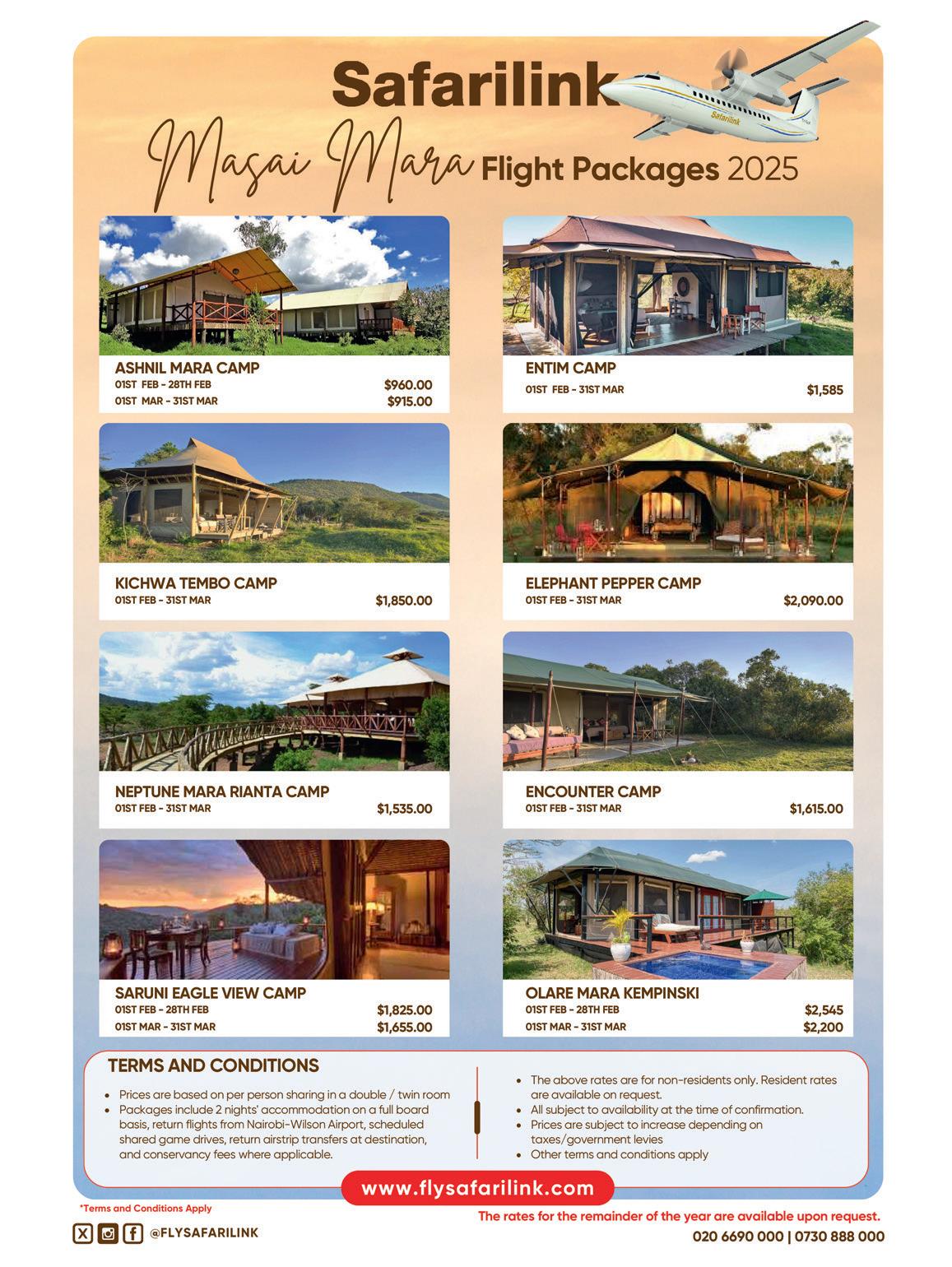WITH COMPLIMENTS OF SAFARILINK | FEBRUARY–APRIL 2025


WITH COMPLIMENTS OF SAFARILINK | FEBRUARY–APRIL 2025

MEET NAIROBI’S BEST GRAFFITI ARTISTS
GATEWAY TO ADVENTURE WHY NANYUKI IS KENYA’S HIDDEN GEM HIPPO HAVEN HOW TO MAKE THE MOST OF A TRIP TO LAKE NAIVASHA MAGIC OF THE MARA UNFORGETTABLE SAFARI REVEALS NATIONAL PARK’S SECRETS
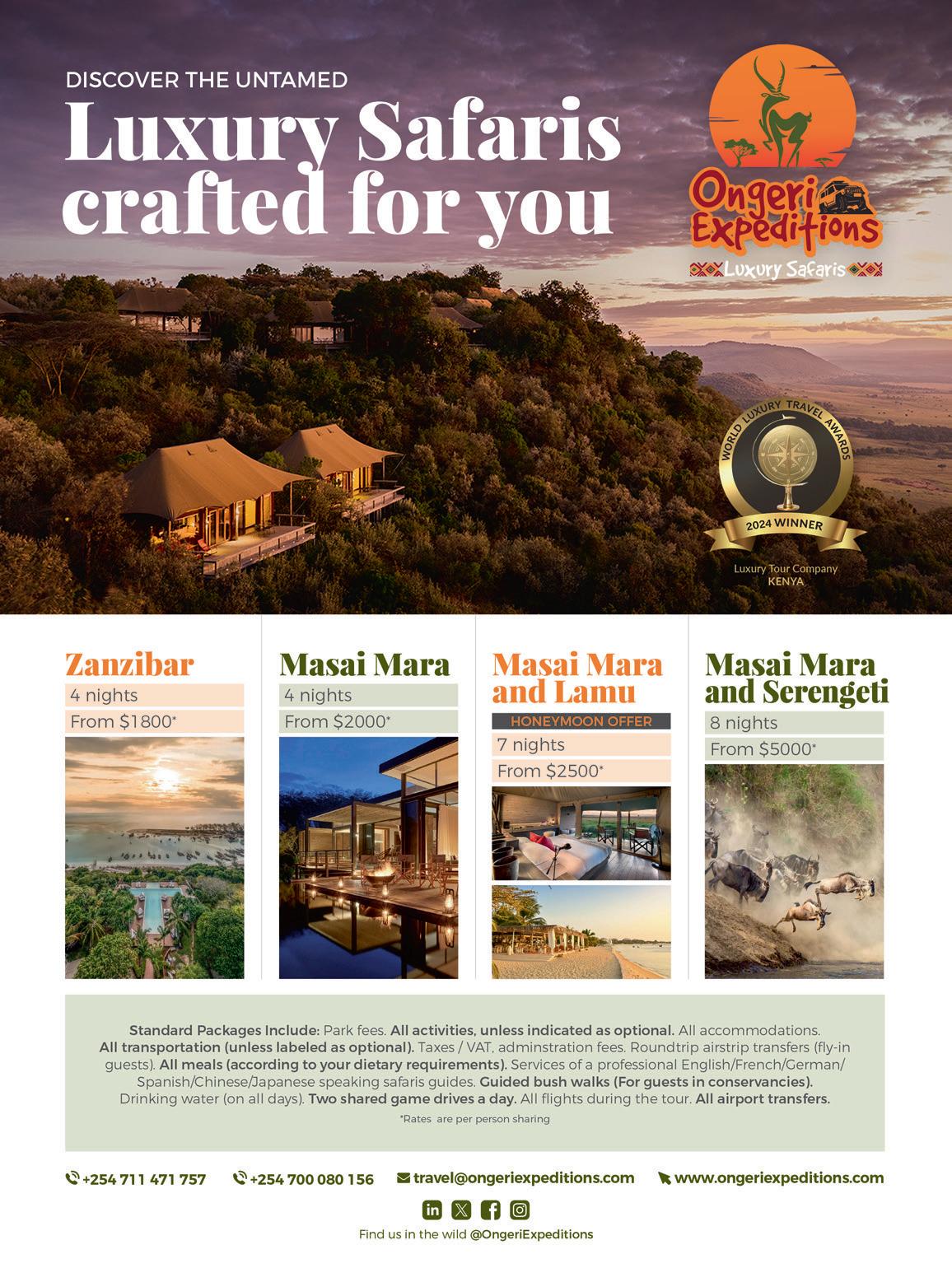
Street Art Meet Nairobi's graffiti specialists
What to see in this gateway to wild adventures
14 5 Kenyan musicians to look out for The emerging stars who should be on your radar 17 Swahili Fashion Week
Design talent shines at showcase in Dar es Salaam
21 Lake Naivasha
Bike safaris, rock climbing and a whole lot of hippos 24 Malindi
Why Kenyan coastal town is known as 'Little Italy'
26 Diving for livelihoods
Meet the women oyster hunters of Zanzibar
29 Secrets of the Masai Mara
Unforgettable safari shows another side to national park
33 9 reasons to visit Nairobi
Why the Kenyan capital should be your next city break
36 Mangrove farming
Coastal communities leading sustainability project
40 10to4 bike ride
Take on Mount Kenya on two wheels


Phoenix House, Wilson Airport PO Box 5616-00506, Nairobi, Kenya
Tel: +254 20 6690000 / 730 888 000
E: res@flysafarilink.com www.flysafarilink.com
The Link is published by:
Media & Design House Ltd
A Subsidiary of Land & Marine Publications Ltd.
Park Place, 2 Parklands Road, Off Limuru Road, Nairobi, Kenya
Head Office: Land & Marine Publications Ltd
6 The Square, Ipswich, Suffolk, IP5 3SL, UK
T: +44 (0)1206 752902
E: publishing@landmarine.com www.landmarine.com
Managing Editor: Mark Edwards
E: markedwards@landmarine.com
Advertising sales:
Antony Gathi, Country Manager
T: +254 (0)721 584 465
E: antonygathi@landmarine.com
Caroline Wairimu, Sales Executive
T: +254 (0)720 943 847
E: kenya@landmarine.com
Printed by Majestic, Nairobi
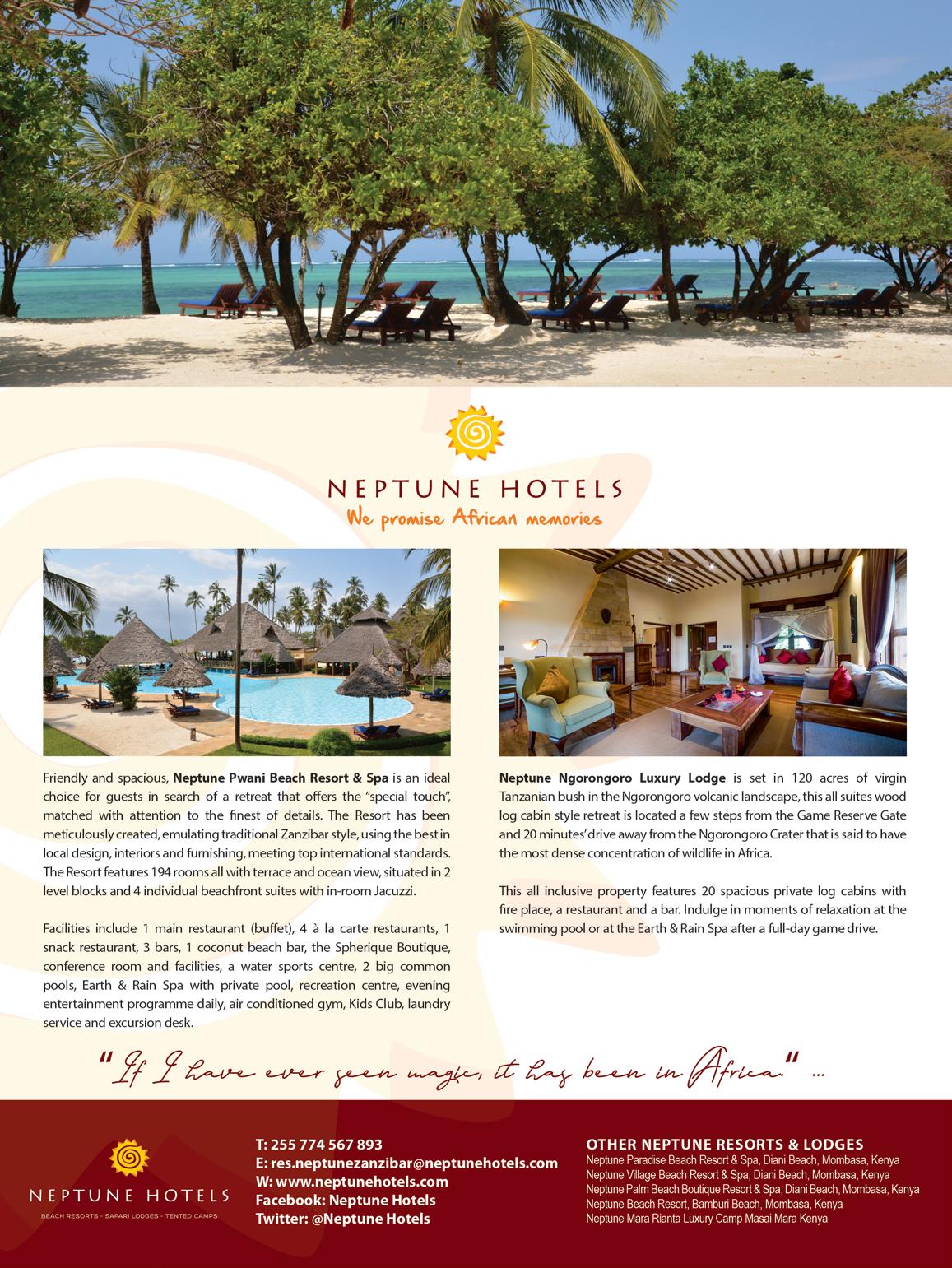
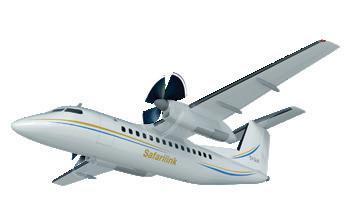
It gives me great pleasure to welcome you onboard your Safarilink flight today and to the latest edition of The Link.
At Safarilink Aviation, we are excited to welcome in a year filled with innovation, exceptional journeys, and memorable experiences.
We are celebrating the entry into service of a new Grand Caravan 5Y-SLR. The 12-seater aircraft arrived in February and is the latest addition to the Safarilink fleet.

We are celebrating the arrival of a new Grand Caravan 5Y-SLR. The 12-seater aircraft is the latest addition to the Safarilink fleet.

The new aircraft will help us carry more passengers and allow us to grow our network of destinations. Already in 2025, we have launched a new direct route between Malindi and Lamu and will soon be adding a direct flight between Amboseli and Masai Mara.
The Safarilink experience begins before you take to the skies. From check-in onwards we are about making every journey special, whatever your reason to travel. Did you know for just US$ 40 per person, you can enjoy the Safarilink Executive Lounge with free wi-fi, meals, drinks, and direct boarding.
Transform your travel experience with us. I wish you a pleasant flight.
ALEX AVEDI | CEO
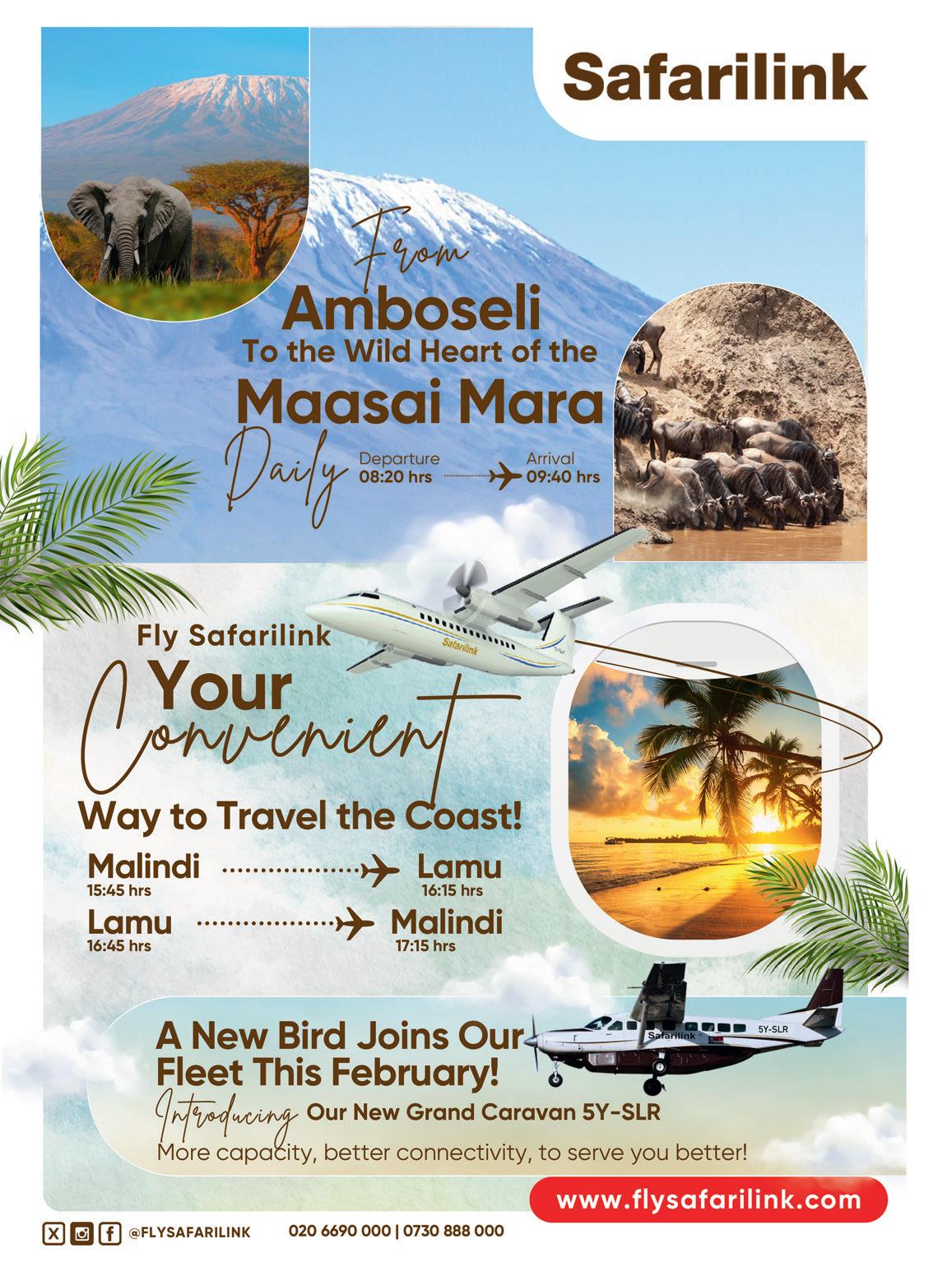

Street art is everywhere in Nairobi. Whether it’s on pimped-out matatus, shop signs or bridges, this colourful graffiti is an integral part of the Kenyan capital’s vibrant culture. Harriet James speaks to some of the city’s most exciting exponents of this public art form.

(real name Kevin Asendi)
Q: You’ve been on the street art scene for 24 years and are still going strong. What inspired you to first venture into this art form?
A : I grew up in Fort Jesus in Kibera [Nairobi’s biggest slum and one of the largest of its kind in Africa]. The great thing about this place is the fact that there are many people which always inspires your creativity. I didn’t have toys, which forced me to make my own. I created my own cars out of wires and this kind of initiated me into sculpture and multimedia arts. Also, there were some murals that had been done by other older artists which I used to see and try to emulate. I picked up graffiti at around the age of 14, and throughout those years, graffiti was a unique form of art.
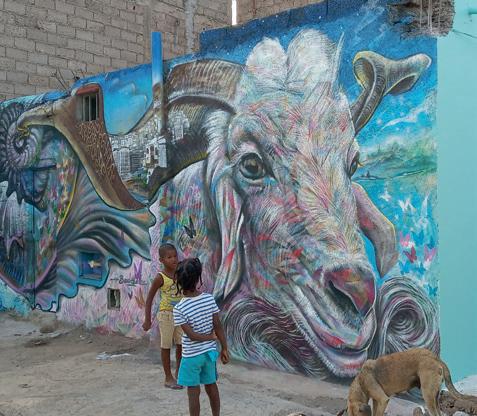

me KES 5,000 per painting, which I could finish in two days. That difference in pay motivated me to quit my job and fully pursue painting.
Q: Graffiti has had connotations with rebellion and vandalism. How have you seen it evolve?
graffiti artist?
A: The cost of paint has always been an issue, which makes it difficult to complete large pieces of work.
Another challenge is I’ve been around for a long time, and when I give clients a quote, they sometimes complain about the cost, not fully understanding that it took me 24 years to reach this level of skill. Occasionally, clients get cheeky and ask for a sketch, only to take it to another designer. Recently, I started charging KES 10,000 for sketches, but clients still complain about the price.
In addition, I’ve had people use my work without permission, but I don’t really see it as a major issue.
It wasn’t the same as contemporary art, which I later studied at Buruburu Institute of Fine Arts. To me, it represented a cool art form that lived on walls, reflecting the character of a city. It inspired me to want to create large-scale works on massive walls.
As a side hustle, I would do graffiti work for music artists, studios, and events. I created a mural that people really liked, which led to new contacts and clients. At my regular job, I was earning just KES 2,000, while the graffiti work was paying
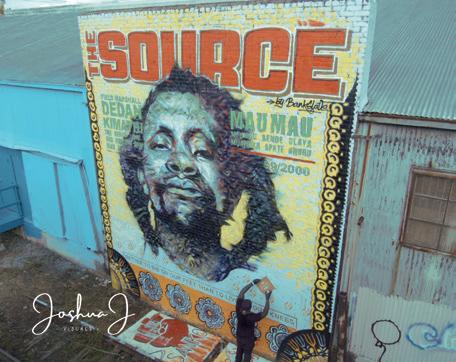
A: The thing about graffiti is that it’s public. For people who paint walls without permission, building owners often get angry when they see them. If a wall is private, you sometimes have to ask for permission if it inspires you to paint on it. At times, I’ve felt inspired just by the texture of a wall, or how it speaks to me. In those cases, I might end up painting illegally. (laughs)
Q: Are painters and graffiti artists more appreciated in Africa today?
A: I have been to at least 12 countries, and the appreciation for graffiti is vast. Here, I would say it’s still growing. Although it is often labelled as illegal in Africa, this doesn't mean it is inherently wrong. Graffiti is a new form of art, and we see it in our matatus. For me, bringing it into the world and using it as a medium for social change – a by creating murals of well-known, inspiring figures like Barack Obama (former US president), Wangari Maathai (Kenyan political activist), and Lupita Nyong'o (Kenyan actress) makes me happy.
Q: What challenges have you encountered in your journey as a
Q: You are known as being the “godfather” of graffiti. What responsibilities does this title bear?
A: It’s a heavy title and it adds pressure to stand out, to be a leader, and to act as a guiding force for those who are coming up in the art world. I don’t take it lightly, as I strive every day to embody the kind of person who deserves that name. I’m also leaving a legacy by mentoring children in Uganda and Kenya who have the passion for arts within them. Practice and mentorship makes them sharper.
Q: What inspired you to first venture into this art form, and how has your journey evolved over time?

A: My journey into the world of graffiti began unexpectedly while I was studying at the University of Nairobi. I initially focused on design and illustration, until I was introduced into the world of graffiti while exploring the creative space at PAWA254 [non-profit youth organisation in Kenya]. It was there that
I met influential graffiti artists like Swift Elegwa and Uhuru B Brown, whose passion for street art ignited something in me.
In addition, there was a strong desire in me to make art not just be consumed in galleries or paid spaces but everywhere.
Q: What inspires your artwork?
A: I’m mostly inspired by the people specifically African women and their interaction with nature and how everything is connected by the life essence that flow through all of us.
I call it the African essence.
Q: Has the number of women doing graffiti increased?
A: Yes, there has been a noticeable increase in female graffiti artists in the country in recent years. Many women are now feeling more empowered to express themselves in a space that was once predominantly male-dominated.
The rise of social media and the digital space means that more artists can share their work, find communities, buyers and gain recognition regardless of their gender. I use social media and it has impacted my work greatly.
Q: What do you love about Nairobi and its street art scene?
A: Nairobi has really embraced art and creative and I can confidently say that I have been ‘made’ in Nairobi.
For graffiti artists, Nairobi offers

both a sense of freedom and a platform for their work to be seen by large audiences, from busy streets and public spaces to cultural venues. What I love about Nairobi is its raw energy and the way it embraces creativity in unexpected places. More galleries, events, and festivals are now dedicated to street art, providing platforms for artists to gain visibility. It’s a city where the walls truly speak, and as an artist, that’s inspiring.
Q: What advice would you give someone thinking of pursuing street art as a career?
A: “Follow your dreams, msee asikushow any” [Let no one hinder your path]. It’s okay to fail. As long as you can still create always try and never give up.
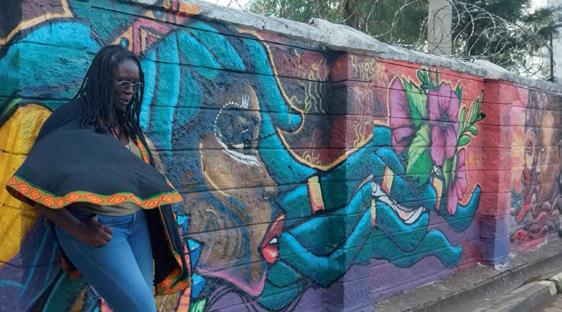

Q: What inspired you to be a graffiti artist?
A: I saw the designs on matatus from a young age and fell in love with it. I studied graphic design in college, but I taught myself traditional art.
Q: What is your style?
A: I love creating and adding colour to blank spaces.
Q: What inspired your name?
A: I pay attention to details in a lot of my work and seven is also the number of completion in the Bible in my faith.
Q: How is Nairobi for you as a graffiti artist?

A: Nairobi is opening up to the idea of adding murals/graffiti to their corporate and private spaces. I love the fact that more galleries, events and festivals are now dedicated to offering platforms for artists like us and this has increased our visibility. In addition, there is a growing community of artists who have been supportive. Another factor is that Nairobi has a youthful vibe and that makes it easier for me as a graffiti artist to both create and showcase


my work. However, even as these are the positives, more needs to be done to make people value art.
Q: You have many art pieces but one that stood out was your work on the late George Floyd. What drove you to create this piece?
A: George Floyd’s death sparked global protests and became a symbol of the fight against racial prejudice and police brutality. It was a great feeling watching my work being recognised all over the world and being interviewed in international media houses. We have seen police brutality here in Kenya during our recent protests and hence I wanted to use my art to make a statement and advocate for change.
Q: What challenges have you faced as a graffiti artist?
A: The public’s false perception that it is associated with vandalism and rebellion makes it hard to gain respect and recognition as a serious artist. Also finding spaces to do this can be a challenge as many cities have strict regulations and sometimes you work can be quickly cleaned or painted over. In addition, financial challenges especially when it comes to accessing materials like the high-quality spray paints and other supplies.
Q: What advice do you have to anyone seeking to become a graffiti artist?
Follow your passion and never stop.



Q: What inspired your passion in graffiti?
A: Curiosity.
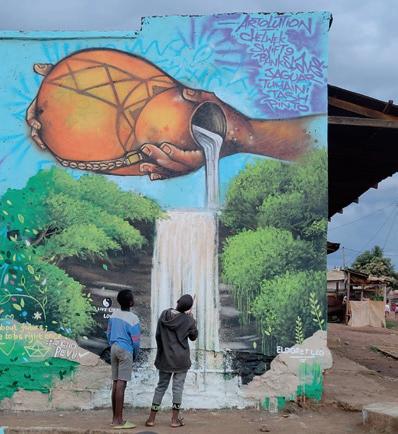
I’m a 90s kid and during that time we didn’t have social media to distract us. We used to make and play outdoors with handmade toys and that inspired my creativity. Hip hop music too was a major contributor and an inspiration. I believe the spray can chose me.
Q: What are you proud of the most about your work?
A: The adventures that have come along with it. I've managed to travel, experience and paint across the world, made lifelong friends, worked on award winning projects, learnt from and taught over 500 youths on how to use graffiti as a tool for expression and advocacy.
Q: What are the pros and cons of doing this?
A: Being a graffiti artist in Nairobi is both fun and challenging at the same time. The good, there's less competition. The bad, limited access to proper materials/tools. In addition, our work is risky as we have to sometimes climb to high places, work in dangerous neighbourhoods or even streets.

Q: You have been recognised and awarded for your work and have had the chance to travel the world, is there any of your works that’s special to you?
A: I’m proud of all my graffiti artworks spread across the globe.
Q: What advice can you give to any young person thinking of becoming a graffiti artist?
A: Practice, practice, practice. Also, conquer your fear of heights.

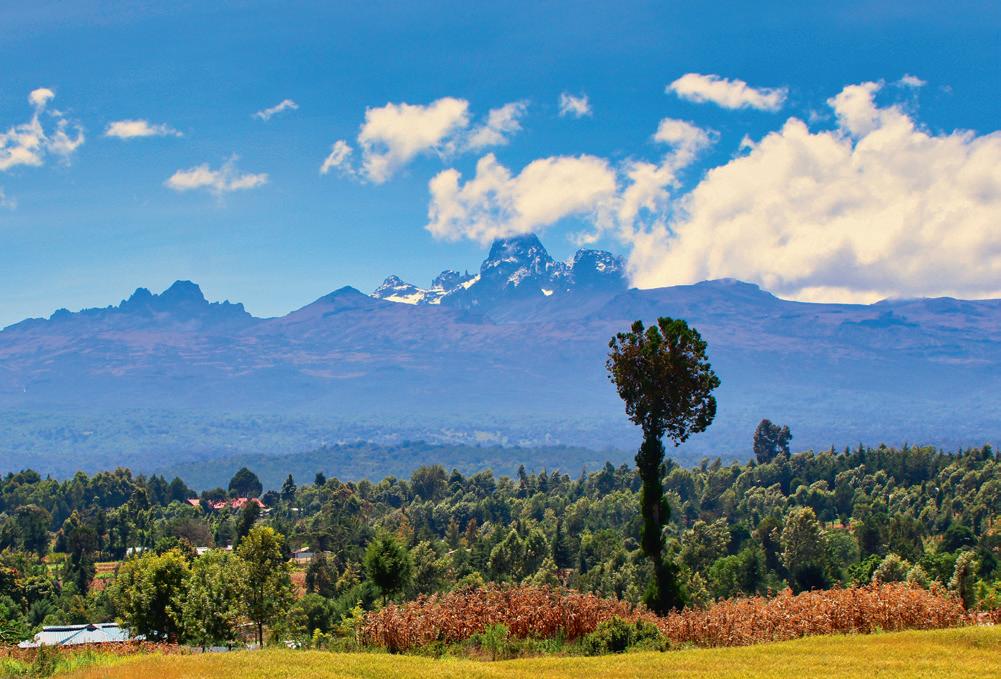
Surrounded by breathtaking views of Mount Kenya and with many of the country’s most memorable natural attractions on its doorstep, Nanyuki is a gateway to a world of adventure. With Safarilink offering two flights a day from Nairobi’s Wilson Airport, The Link takes a closer look at this jewel of Central Kenya.
The market town is the commercial hub for the surrounding farms, ranches, game parks, and wildlife conservancies. There is plenty on offer here for visitors preparing for or recovering from their intrepid adventures. The town has lively food and club scenes, shopping malls, craft stalls and a cinema. In fact, Nanyuki has become one of the most desirable places to live in Kenya. The town is just a three-
hour drive north from Nairobi and many people have relocated from the capital to enjoy the clear mountain air – though at an altitude of 2,000 metres it can get cold here – and investment opportunities of this booming tourism region. It’s also one of the safest places in Kenya to live – this may have something to do with the dual threat of the Kenya Air Force’s main airbase and the British Army Training Unit Kenya on the outskirts of town.
Another selling point for house-hunters is the spectacular views Nanyuki affords of Mount Kenya. On a clear day, the icy peaks of Africa’s second highest mountain can be seen wherever you are in town. Trails to the mountain top begin just 15 km from Nanyuki town. The mountain – known to the local Kikuyu people ‘Kirinyaga’ or ‘mountain of whiteness’ because of its snowcapped summit – has three peaks with the third highest, the at 4,985-metre Point Lenana, the only one that can be hiked all the way to the top. The trek up and down usually takes around four days. The highest point, Batian, requires technical rock-climbing skills and you’ll need a minimum of six days. If you don’t have the time or inclination for a summit challenge, there are still plenty of hiking opportunities in the foothills of Mount Kenya that take in land-

marks such as the glacial beauty of Lake Ellis and the debutant-friendly peaks of Mugi Hill and Giant’s Billiard Table.
To master some mountaineering fundamentals before you take on ‘Kirinyaga’, head to this climbing tower 4 km east of Nanyuki town at the base of Mt. Kenya. The wall has pegged routes to the top for all levels of climber. There is even got a rather lovely café to refuel after your exertions. Staff can also help organise a trip up Mt Kenya or to the Turamen Camp in the heart of eastern Laikipi where there are more walls to try out.
The Mount Kenya National Park protects the area’s rich but fragile biodiversity that includes rare and endangered animals and 11 endemic plants. This biodiversity is threatened by climate change. As temperatures rise, vegetation
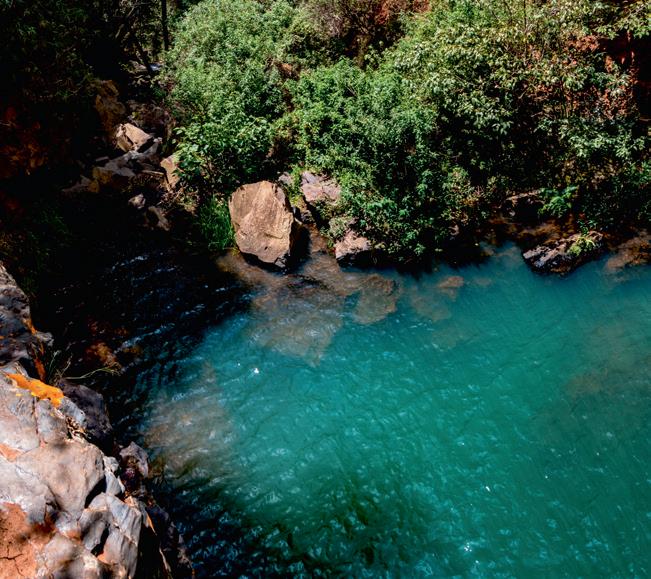
THIS LUSH PARADISE IS ABOUT ONE HOUR’S DRIVE FROM NANYUKI. THE PARK’S NAME MEANS ‘WATERFALLS OF THE GODS’ IN THE MAASAI LANGUAGE AND A HIKE IN THE DOUBLE CANOPY FOREST WILL REVEAL CATARACTS OF CRYSTALLINE WATER THAT PLUNGE FROM MOUNTAIN SPRINGS INTO CLEAR BLUE POOLS

zones are expected to shift higher up the mountain. To help the park’s animals such as Cape buffalo, leopard, blackand-white colobus
monkeys and a 2,000-strong population of elephant adapt to these changes, the Lewa Wildlife Conservancy has established corridors to connect the park with other national parks and reserves. A section of the corridor even runs under the A2 highway and is popular with elephants making their way to conservancies in the Samburu-Laikipia area, whose elephant population is thought to number around 7,500 animals.
The Mount Kenya ecosystem is also home to several species of antelope – the rarest of them being the critically endangered mountain bongo. The Mount Kenya Wildlife Conservancy, which is located at the foot of the mountain, was set up 21 years ago to protect the bongo along with other local endangered animals such as such as the Grevy’s Zebra. The mountain bongo is endemic to the montane forests of the Kenyan highlands – a dwindling habitat – so the conservancy has worked with local communities on tree-planting projects to rewild degraded areas. It has also imported 18 captive bred mountain bongos to help restore the declining population. Breeding conservation programmes are centred at the Mawingu Mountain Bongo Sanctuary, a world first 776acre haven that has seen the birth of three calves since it opened in March 2022. The sanctuary, which is open to the public, is working towards reintroducing 750 mountain bongos to their natural habit

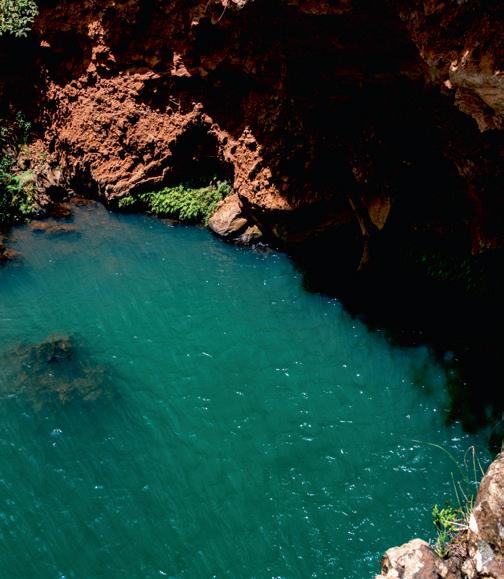
over the next 50 years. In 2023 the conservancy also reintroduced giraffe to Mount Kenya for the first time in 40 years.
This lush paradise is about one hour’s drive from Nanyuki. The park’s name means ‘waterfalls of the gods’ in the Maasai language and a hike in the double canopy forest will reveal cataracts of crystalline water that plunge from mountain springs into clear blue pools you can swim in. Elephant are among the bathers – they apparently slide down the steep slopes on their bottoms to reach the pools – and the park is home to all the Big Five animals so hikes here have to be led by an armed guide. An unforgettable vantage point to take in bounteous flora and fauna here is the park’s 12-metrehigh canopy walkway that links the treetops here for almost half a kilometre. Other activities available here include game drives, cliff diving and abseiling.


This vast and ancient landscape located 20 km northwest of Mount Kenya is made up of hilly terrain, cedar forests, open grasslands, and wooded valleys. These protected habitats support diverse wildlife such as elephant, buffalo, lion, hyena, jackal, zebra (including the endangered Grevy's), vervet monkeys and baboons. The area’s folding hills, formed by volcanic activity tens of millions of years ago, shelter a network of caves that contain paintings in ochre and sheep fat made by human visitors dating as far back as 2700 B.C and as recently as the early 19th century by the local Samburu people.
Adrenaline junkies will love the outdoor adventures such as zip-lining, kayaking rock-climbing and white water rafting available along the Sagana river. This fast-flowing tributary of the Tana River is known for its rapid, including

the ‘Sagana Plunge’ a 12-metre drop of white water that is a real test of bravery. There are also calmer stretches of the river that allow family-friendly rafting and the chance to row under a waterfall. The river-side camps that are the hub of all these activities around 40 minutes from Nanyuki. There are bandas for overnight stays.
Kenya is one of 13 countries in the world traversed by the equator with the exact point signposted about 6 km out of town on the Nanyuki to Nairobi road. Grab a selfie at the place where the Southern and Northern Hemispheres meet and you may find there is a local on hand with a jug and a bowl to demonstrate – for a small fee – the scientific marvel that is the Coriolis effect. The jug is filled with water and some sticks are floated on top. The jug has a hole in its base that the local seals with his finger before removing it to let the water run into a bowl below. You’ll see the sticks will rotate clockwise if the experiment is performed north of the equator, counterclockwise if performed south of the equator, and remain

motionless if performed on the equator. Why? Well, as Earth spins on its axis, circulating air is deflected toward the right in the Northern Hemisphere and toward the left in the Southern Hemisphere. This deflection is called the Coriolis effect.
‘

Q: In your role you are responsible for the day-today operations of the airline. Can you tell us what that can include on any given day?
A: On any given day, I might oversee flight schedules, manage crew assignments, operate flights at times, coordinate aircraft maintenance, ensure compliance with safety regulations, handle customer inquiries or complaints, actively engage in audits and inspections, actively engage with other departments and the Kenya Civil Aviation Authority, develop and maintain company manuals and monitor operational performance. The goal is to ensure that the airline runs safely, smoothly, efficiently, and in compliance with the Kenya Civil Aviation Regulations and best industry practice, whilst providing a positive experience for our passengers.
Q: The role requires managing a wide range of tasks and initiatives simultaneously. What is the key to effective multi-tasking?
A: Effective multitasking involves sound planning and prioritisation of tasks based on urgency and importance, using tools like to-do lists and calendars to stay organised. Breaking down larger tasks into smaller, more manage-
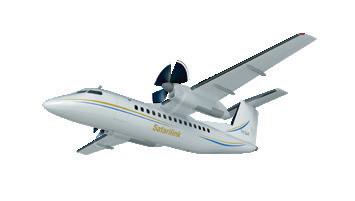
An airline’s Director of Operations oversees day-to-day operations, compliance with safety regulations, and overall performance. Safarilink’s DOO Faheem Razzak shares insights into this crucial role.
able steps can also be helpful. Additionally, maintaining focus on the task at hand while remaining adaptable to changing priorities is crucial.
Q: What other skills does a good Director of Operations need?
A: Leadership, communication, problem-solving, decision-making, strategic thinking, industry knowledge, safety and compliance focus, financial acumen, adaptability, flexibility, and customer focus.
Q: You work closely with Safarilink’s team of pilots. What is your role here?
A: I oversee pilot training and development, performance management, and communication within the team and across departments, motivating and developing pilots through guidance, training, and mentoring. I foster a strong safety culture by encouraging open communication and promoting a just culture where pilots feel comfortable reporting errors and concerns without fear of retribution.
Q: You are also a pilot. What does this add to your abilities as DOO?

MY PASSION FOR AVIATION BEGAN IN CHILDHOOD, INSPIRED BY MY AIRLINE PILOT UNCLE. THIS LED ME TO PURSUE A CAREER THAT COMBINES MY LOVE FOR AVIATION WITH MY LEADERSHIP SKILLS AND OPERATIONAL EXPERTISE.
Q: Why did you choose this career path?
A: My passion for aviation began in childhood, inspired by my airline pilot uncle. This led me to pursue a career that combines my love for aviation with my leadership skills and operational expertise. As Director of Operations, I enjoy the diverse challenges and the opportunity to make a real difference in the industry.
Q: How long have you been with Safarilink? What made you want to work with the airline?
A: I hold an Airline Transport Pilot License (ATPL) with an instructors rating, and I'm also a training and check pilot. This firsthand flying experience gives me a deep understanding of flight operations. It allows me to better relate to and empathise with our pilots and make more informed decisions.
A: I've had a long history with Safarilink, including 12 years of
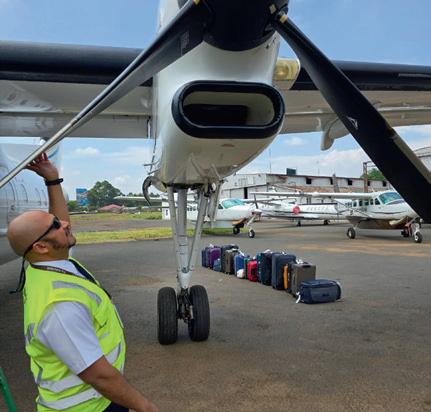
full-time experience and intermittent involvement over the past 18 years. I was initially drawn to Safarilink's unique position in the Kenyan aviation market and their strong commitment to safety and customer service. What keeps me here is their dedication to maintaining high standards, serving remote communities, and fostering a positive working environment. I'm proud to contribute to the growth of aviation in Kenya with an organisation that aligns with my values.
Q: What was your professional background before beginning the Safarilink role?
A: Before joining Safarilink, I gained valuable experience as a flight instructor, training private and commercial pilots. I also operated charter flights for air safaris, which broadened my understanding of operational challenges and customer service.
Q: How do you think you have made a difference in the aviation industry during your professional career?
A: I believe I've made a difference by helping aspiring pilots achieve their dreams, training numerous individuals to Private and Commercial Pilots Licences. I’m also proud to contribute to the devel-


opment of future instructors and check pilots through my training and mentoring efforts.
Q: Your role comes with a great deal of responsibility. How do you handle that?
A: By ensuring I do the right thing. This means prioritising safety above all else, adhering to regulations and company policies, and making informed decisions that benefit both our passengers and our team. It also involves fostering a culture of open communication, accountability, and continuous improvement. I believe in leading by example, setting high standards for myself.
Q: What would be your advice to a young Kenyan considering a career in aviation safety?
A: I’d encourage them to pursue a strong educational foundation in aviation-related fields, whether it’s through a dedicated aviation
academy or a university program.
Gaining practical experience is crucial, so seek out internships or entry-level positions in safety-related roles. Never stop learning! Actively pursue professional development opportunities, stay updated on the latest safety regulations and technologies, and build a strong network of industry professionals.
Q: What are your favourite destinations to visit on the Safarilink network and why?
A: I love flying to all the destinations Safarilink serves, but I particularly enjoy flying to Zanzibar. The approach over the turquoise water is always breathtaking, and the island itself is a beautiful blend of cultures and history.
Q: You ensure the entire Safarilink team is aware of and motivated by the company goals. What can you share about those company goals?
I LOVE FLYING TO ALL THE DESTINATIONS SAFARILINK SERVES, BUT I PARTICULARLY ENJOY FLYING TO ZANZIBAR. THE APPROACH OVER THE TURQUOISE WATER IS ALWAYS BREATHTAKING, AND THE ISLAND ITSELF IS A BEAUTIFUL BLEND OF CULTURES AND HISTORY.

A: Our company goals revolve around maintaining the highest safety standards, providing exceptional customer service, improving operational efficiency, minimising environmental impact, and promoting growth and development.
Q: How do you ensure that Safarilink passengers have the best possible experience from the moment they check in to reclaiming their baggage?
A: We focus on providing efficient check-in and safe, comfortable, efficient and reliable flights, with competent and friendly staff.



TEach year Dar es Salaam asserts itself as the home of Tanzania’s modern fashion scene by hosting the annual Swahili Fashion Week that showcases designers from East Africa and beyond. Sal Economos reports from the runway.
HE FASHION CALENDAR IN DAR ES SALAAM was jam-packed in 2024. Several high-profile runway shows drew large crowds as the sector continues to grow in popularity. Tanzania’s largest city has become an energetic hub of activity for designers, models and the prevailing social media attention.


Closing out the year was the annual Swahili Fashion Week (SFW). The three-day event is the daddy of fashion shows in Tanzania with a legacy of excellence. The event kicked off with a series of press conferences and forums which focused on sustainable fashion and promoted the importance of African culture through fashion. Tanzanian president Dr Samia Suluhu Hassan joined forces with SFW to embrace eco-friendly energy solutions. The platform aims to merge fashion with advocacy, highlighting the role of creativity in driving social and environmental change.
The sold-out evening catwalk shows were held at Parthenon Hall – a Greek-themed events venue in the



city. In addition to designers showcasing their collections, there were a series of award presentations.
SFW was started 17 years ago by local designer and entrepreneur Mustafa Hassanali. The event is the one all Tanzanian designers want to be a part of. Some 40 designers were chosen to exhibit at the event. Among them were Kulwa Mwakandule, whose runway shows cemented his reputation as one of Tanzania’s premier designers. After
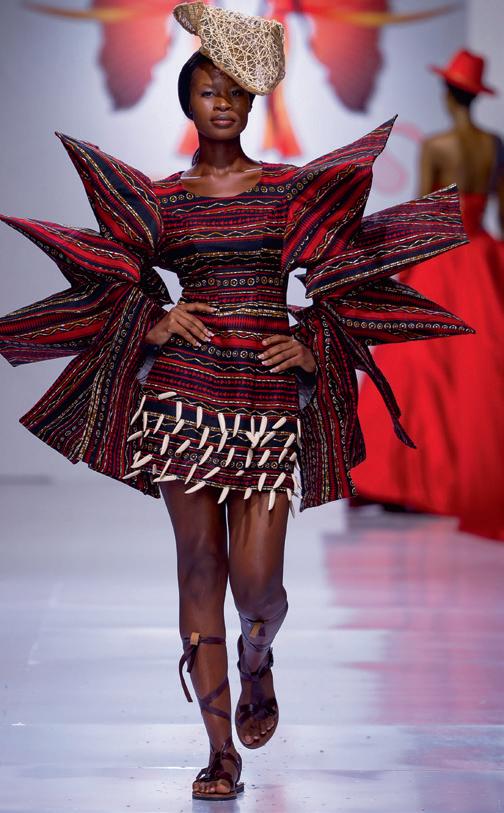

his show, he told me: “I’ve been designing for 11 years. Mwakandule’s on is my brand name and also my father’s name. It’s historic meaning is King.” Kulwa’s collection was a standout of the evening as he combined traditional Swahili sensibilities with unconventional flare. “Dar es Salaam is a melting pot of people. From all over the world. My collection wanted to acknowledge this,” he added.
The Italian Embassy in Dar es Salaam has been a long-standing supporter of SFW and in 2024 there was a notable number of Italian designers involved. Guia Martinotti, an Italian fashion designer who relocated to Tanzania, told me: “I had been working with Tom Ford between London and Milan for 13 years. I gained extensive experience from the position.”
She was showcasing designs from her brand Noor Tribe. She explained: “Noor means glow or light in Arabic. I chose it to symbolise hope and illumination. Noor Tribe is a movement to celebrate culture, empower communities and redefine modern African design.”



Her collection at SFW was a reinterpretation of the shuka, a vibrant cloth traditionally worn by Maasai men. She said: “It pays homage to Maasai heritage but embraces contemporary sensibilities for women. I’m calling it ‘The Metropolitan Maasai!’”
She added: “I moved to Tanzanian six years ago. The country has a rich heritage and culture. Its deep connection to community and the beauty of the people inspires me.”
Flora Rabitti is a designer from Milan who studied design in London and Paris. At SFW she showcased her Florania collection from her recent show in Florence. She told me: “I use recycled and up-cycled materials. I have photo-sensitive
materials that change colour in sunlight. The dyes are sourced from vegetables and fruit.” She describes her style as “happy gothic”.
As to why she was exhibiting in Tanzania, she said: “I was invited by the Italian Embassy and a major fashion institute in Italy. Next week I fly back to Italy to prepare for my next fashion show. I hope to come back.”
Walking the runway at SFW has a certain cachet for Tanzanian models. Thirty models were chosen from two hundred hopefuls. The youngest, Yasmine Scherer, is 16, but she showed a confidence on the catwalk beyond her years. The teen, who is on the books of local modelling agency Black Fox, told me: “Because I’m under 18, I have to be supervised by my father. Black Fox discusses with my teachers about class schedules. It all means it can be difficult when photo shoots come in at the last minute.” Watching from the side of the runway, I couldn’t help but be impressed by how well Yasmine commanded the stage.
Many older models are surprised by her composure. However, Yasmine told me: “At my first show on live TV I was so scared of tripping in my high heels.”

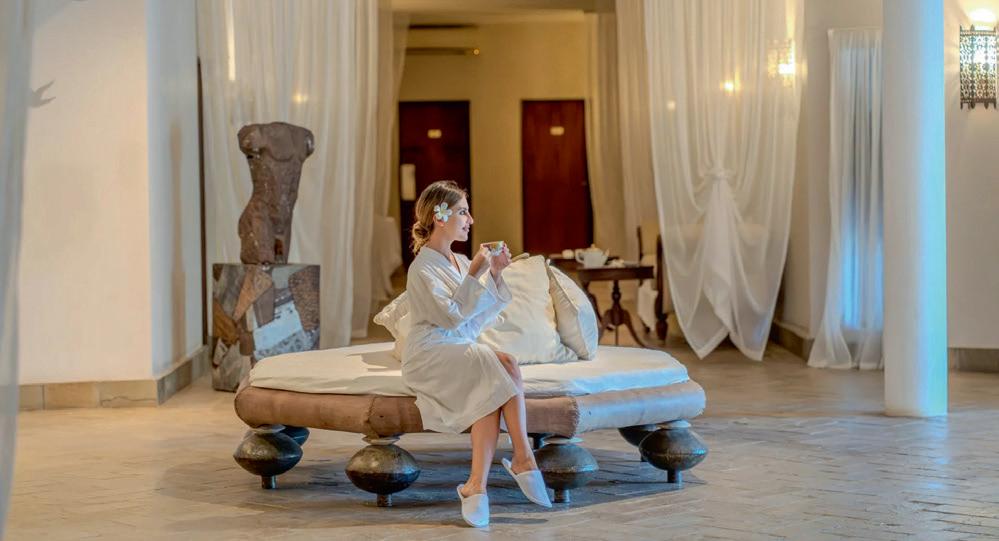
Don't miss your chance to experience the height of spa luxury!
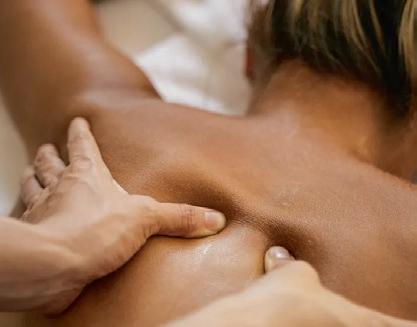
THE PRIZE DOES NOT INCLUDE FLIGHTS TO AND FROM MALINDI
EXPERIENCE THE PINNACLE of spa luxury at the awardwinning Lion In The Sun Resort, nestled within Kenya's picturesque coastal paradise.
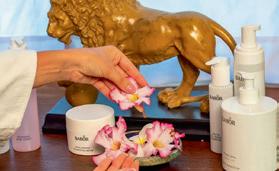
Competition terms and conditions: Prizes dependent on availability. One entry per person. Entrants must be 18 years or over. The decision of the organisers will be final. The competition is not open to employees and their relatives of Safarilink, Land & Marine Publications Ltd or Lion In The Sun. The prize does not include flights to the destination. Images are for representation purposes only. Competition ends 10 April 2025. Winners will be announced in the next issue and contacted directly.

Congratulations to Mark Muthui Mbogo who wins a two-night’s stay for two at Saffron Garden. Well done and thanks for flying with Safarilink. For more information on Saffron Garden visit www.saffronmalindi.com
This exclusive retreat boasts six treatment cabins and three state-of-the-art seawater hydrotherapy facilities, offering a haven of tranquillity and rejuvenation.
Partnering with The Link, we invite you to enter this exclusive competition for the chance to win an incredible spa package for two. Immerse yourselves in a world of relaxation and rejuvenation, where you can unwind and reconnect all day!
To be in with a chance of winning this amazing prize, email a photograph of you holding this issue of The Link on your Safarilink flight to competition@landmarine.org by 10 April 2025.
All you need to know about
At day-trip distance from Nairobi and packed with wildlife large and small, Lake Naivasha is a must-see Kenyan destination. Here’s all you need to know before you go.

Lake Naivasha is a large freshwater lake – it has a surface area of 139 sq km – located just outside the town of Naivasha in Nakuru County. Situated at an elevation of 1,884m, Lake Naivasha is the highest lake within the Great Rift Valley.
HIPPO HAVEN
Spotting hippos on a boat trip on Lake Naivasha is just about guaranteed. There are more than 1,500 of these ‘river horses’ – hippopotamus is a portmanteau of the Greek words hippos (horse) and potamos (river) – living on the lake. You’ll often spot them lounging in the shallows
with just their eyes, ears, and nostrils above the water. Experienced boat pilots – who can be hired through your lakeside lodge or privately in neighbouring fishing communities – will know how to safely approach these notoriously territorial and truculent creatures.


As well as hippos, the water source of Lake Naivasha attracts plenty more animals. You can also see giraffe, zebra, and waterbuck grazing along the shores.
Lake Naivasha is ringed by 64 sq km of swamp with a forest of fever trees beyond that. These rich surrounding habitats provide important breeding grounds for numerous bird species while the lakeshore itself is a rich food source. More than 400 species have been recorded here. Many can be spotted along the shoreline. Many species of kingfisher thrive here. You’ll see the iridescent malachite kingfisher and the crow-sized giant


SUNSETS ARE ANOTHER LEVEL OF BEAUTIFUL AT LAKE NAIVASHA. FIRSTLY, THERE IS THE DUST IN THE AFRICAN ATMOSPHERE THAT REFRACTS LIGHT FROM THE SUN, CREATING BRILLIANT ORANGE, REDS, AND YELLOWS IN THE SKY.

kingfisher with its shaggy crest perched on papyrus stems on the shore scanning the water for their prey. Fish eagles also proliferate here and their haunting calls are an evocative soundtrack to life by the lake.
Sunsets are another level of beautiful at Lake Naivasha. Firstly, there is the dust in the African atmosphere that refracts light from the sun, creating brilliant orange, reds, and yellows in the sky. Then factor in the expanse of water that gains a mercury-like sheen as the sun descends. Finally, there is the forest of dead, yellow-barked acacias trees half submerged by the lake which are silhouetted against the rosy skyline to complete a wondrous curtain call to the day.
The number of submerged trees in Lake Naivasha give evidence of rising water levels around here. In recent years the increased rainfall and flooding have been blamed on climate change, but the lake has long had an association with extremes of weather. The
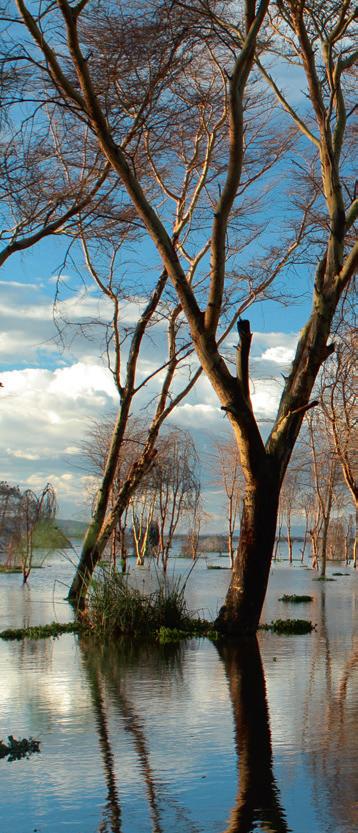
name Naivasha comes from the Maasai word ‘Nai'posha’, which means ‘that which heaves’ and was coined because of the lake’s sudden and dramatic storms. The water can be calm one moment and then whipped by strong winds the next.
The fresh water of Lake Naivasha supports most of Kenya’s flower industry. Kenya is the third-largest exporter of cut flowers in the world, and 70 per cent of these flowers go to Europe. Naivasha benefits from long daylight hours, the Great Rift Valley’s fertile volcanic soil and a reliable irrigation: a trifecta ideal for flower growth. It is said that one in every three roses sold in the world are grown in Naivasha. Many of the flower farms here offer guided tours for visitors.
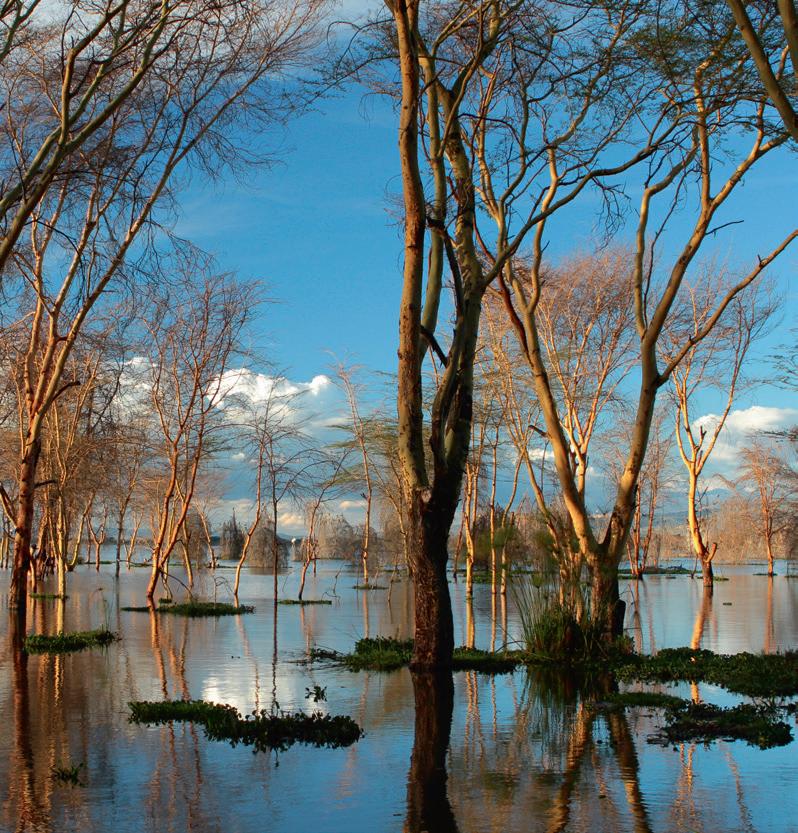
A trip to Lake Naivasha can be paired with neighbouring adventures. Hell’s Gate National Park is just an hour’s drive away and offers unforgettable bicycle safaris among the park’s volcanic rocky outcrops, obsidian caves, bubbling hot pools and rock towers. Sharing the dramatic landscape with you will be herds of wild zebra, giraffe and buffalo. Another safari option is the Crescent Island Wildlife Sanctuary on the lake’s eastern shore that is home to wild Masai giraffe, hippo, zebra and pelican. Guided walking safaris and accommodation are available.
Lake Naivasha is dotted with floating islands. These rafts of vegetation are formed when plants such as papyrus and Nile cabbage

that ring the lake grow out from the shoreline and their roots can no longer reach the bottom. The islands have a range of environmental benefits. They help improve water quality, provide a habitat for birds and fish and help protect the degraded ecosystem of the lake. A boat trip on the lake will allow you to see these wind-driven islands up close.
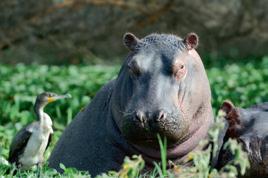
● A group of hippos is given the rather body-shaming name of a bloat. The term was coined in 1939 and likely refers to the large, bloated bellies of hippos, which are caused by their diet of grass that they can store in their stomachs for up to three weeks if food is scarce.
● Despite hippos spending more than 16 hours per day in the water, they can’t swim. Their heavy bodies and dense bone structure make it difficult mean they sink rather than float. Instead of swimming, they get around by walking or bouncing along the bottom of the lake. Hippos can cover quite a lot of ground by this method as they are able hold their breath for more than five minutes.
● Hippos can even sleep underwater using a reflex that allows them to bob up, take a breath, and sink back down.
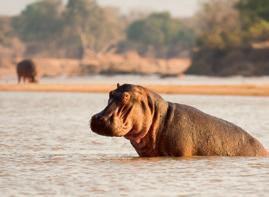

● Despite being herbivores, hippos are the world’s deadliest land mammal to humans. It is estimated 500 people are killed by hippos each year in Africa (lions account for 22 in comparison). Problems are most likely to occur when the hippo comes on land in the evening to feed. Should you stumble upon one at this time, it is it is extremely dangerous to get between a hippo and the water as it will likely charge in panic. They have surprising agility given their size with some clocking speeds of up to 30 km/ hr. Wandering the lake shore at night is not advised.
The beautiful coastal town of Malindi is known for its endless beautiful white sandy beaches. It sits amid a string of tropical beaches dotted with hotels and resorts.




Pass a fellow beach walker strolling along most stretches of the Kenyan coast and can expect to be met with “jambo” but wander the endless white sands of Malindi and the friendly greeting is more likely to be “ciao”. In this beautiful seaside town the lingua franca is often Italian rather than Swahili.
Malindi was founded in the 9th century and for the next 600 years flourished as a cultural and trade crossroads between the local Bantu people and Arabia, India, China, and Portugal. Since the late 1960s the town has been known as ‘Little Italy. Italians now own more
than 2,500 properties in Malindi –including many of the town’s luxury resorts and hotels. The town is hugely popular with Italian tourists and it is estimated there are more than 3,000 Italians live in Malindi and its coastal neighbour Watamu.
The tourist-friendly resort with its pristine beaches and wealth of watersports is loaded with Italian restaurants, pizzerias, delis and gelateria. There are Italian supermarkets selling imported olives and oils, pasta, panettone and liquors such as Limoncello and Amaro. You can use Italian to direct your boda boda driver, buy drinks from a beach boy or ask a

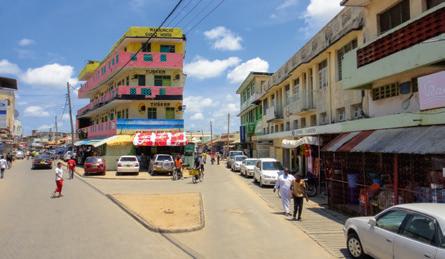

off Malindi in the Indian Ocean, made it ideal for launches and monitoring.
It has two offshore launch sites, made from old oil platforms, and a mainland communications station. In 2004, after it was taken over by the Italian Space Agency, it was renamed after pioneering Italian aerospace engineer Luigi Broglio. The Kenya Space Agency Board announced it would be launching a series of mini-satellites and rockets from the site in 2021, but this did not happen (In 2023 the agency launched its first operational satellite, Taifa-1, from Vandenberg Space Force Base in California on a SpaceX rocket.) The Malindi ground station is still used for satellite communications.

This longstanding beach-side restaurant makes full use of the abundance of fresh seafood that Malindi offers. The aptly named ‘Gargantua’ seafood platter crams in all manner of crustacea on one plate. Similarly super-sized are the oven-fired pizzas that the restaurant is renowned for. More Italian favourites on the menu include calamarata, a thick ringed pasta that is named for its resemblance to sliced calamari. A vaulted thatched roof frames the spacious indoor dining area ¬– also inside is an art gallery showcasing work by local artists – while a terrace spills out onto the flawless vanilla sand here with eye-rubbingly beautiful views of the ocean.
Malindi
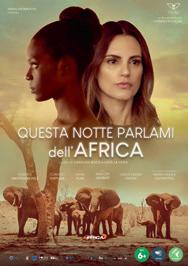
fisherman about his catch of the day and you’ll be understood. Even advertising posters are in Italian here. Malindi is even one of the few small urban centres in the world with an Italian consulate.
The ‘Little Italy’ nickname for Malindi was first used when Italian engineers and scientists settled in the town after the opening of the Broglio Space Centre in the 1960s. First known as the San Marco Equatorial Range, it was developed in partnership between the Italian Space Research Commission and Nasa to launch Italian and other satellites. Its location, near the equator and about 32km
The first Italian scientists soon sent word home of Malindi’s pristine beaches, abundant seafood and friendly locals. Malindi got its own international airport in and by the 1980s tourism was booming with estimates suggesting 4,000 Italians lived in the town and 30,000 visited annually. Those numbers were to dwindle with factors ranging from security fears around Kenya’s northern border, through whispers of the Italian mafia’s presence to the coronavirus.
Still, an Italian community continues here and tourism numbers are returning. For visitors it can still feel they have arrived in an Italian coastal town such as Sorrento or Amalfi rather than East Africa.
The 2023 film Questa notte parlami dell’Africa (Tonight talk to me about Africa) was mostly shot in Malindi and Watamu. The comedy-drama focuses on two women – lawyer Emma who escapes a failing marriage and stressful job in Italy for Africa and Nuri, a young African girl, who finds freedom from her strict upbringing by reading books –whose friendship pushes them both to focus on their fears and desires. The film’s producer Corrado Azzollini is a long-time visitor to Kenya and especially Watamu. His films include the documentary The Shaman’s Touch in which he meets shamans from Kenya and Morocco in a bid to enter the spirit world.
Internationally recognised painter and sculptor Armando Tanzini was born in Livorno in Italy’s Tuscan region, but he has lived and worked in Malindi for the past 45 years. His adopted coastal home inspires his work with driftwood carved into wooden elephants and discarded flip-flops on the beach cut into a collage in the shape of Africa. His work has represented Kenya at the Venice Biennale on numerous occasions, and he owns beachside lodge and art space the White Elephant Sea and Art Lodge where his work adorns each of the guest rooms.

For more information on his work, visit @armandotanzini on Instagram


Shellfish collecting is a task traditionally done by women in Zanzibar. Kevin Mutinda Kelli takes a boat trip with the mothers and daughters of the ‘Baya Halipo’ crew in Kikungwi and finds the intrepid job brings independence as well as plenty of shellfish.
Imeet Bi Mosi at around 9AM at the Kikungwi Market in the south of Unguja, Zanzibar’s largest island. She’s small but emanates an aura of authority. On arrival I am offered a satay of seafood which I dutifully put in my mouth. The delicious flavours dance on my tongue. “What is this?” I exclaimed. “Hio ni Chaza” she says in Swahili. “Those are Oysters”
At 59 years old, Bi Mosi is a legend at the market. She is the chosen leader of women’s collective ‘Baya Halipo’, which means ‘there is nothing bad’ or ‘all is good’ in Swahili.
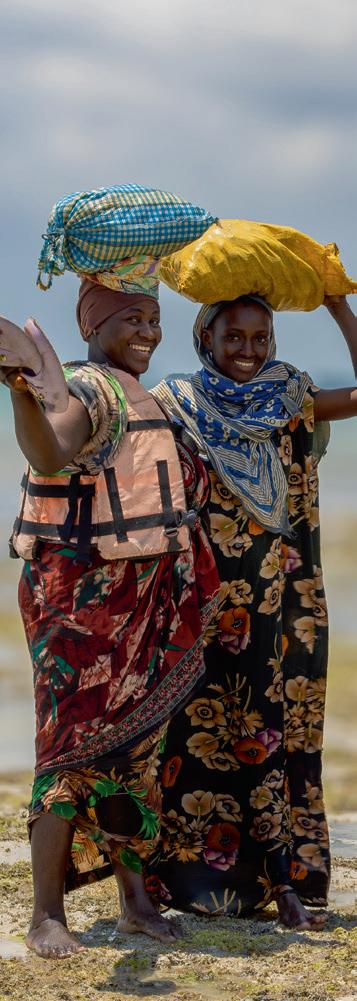
This self-empowerment group was founded over 30 years ago by market traders who were fed up being left alone when their husbands went fishing. They decided to hunt for shellfish and sell it on the roadside.
The collective has been supported by the government as its operations have grown. “The government of Zanzibar built this market for us,” Bi Mosi says proudly, motioning at the huge covered building where the shellfish selling now takes place. “We even have a modern baby care room where our babies can play as we work,”
she adds. “We sell everything from fruits and vegetables, but we’re famous for shellfish as you shall see today.”
Bi Mosi then takes out her smartphone and barks orders into it. Two boda boda motorcycle taxis arrive in no time and we speed off, each a passenger. At the shore we find a group of women exuding an air of military efficiency. I am ushered into a skiff and soon we are tearing through the open ocean at high speed.
Bi Mosi introduces me to her team – Shani, Hawa, Mwanapili, Saada,
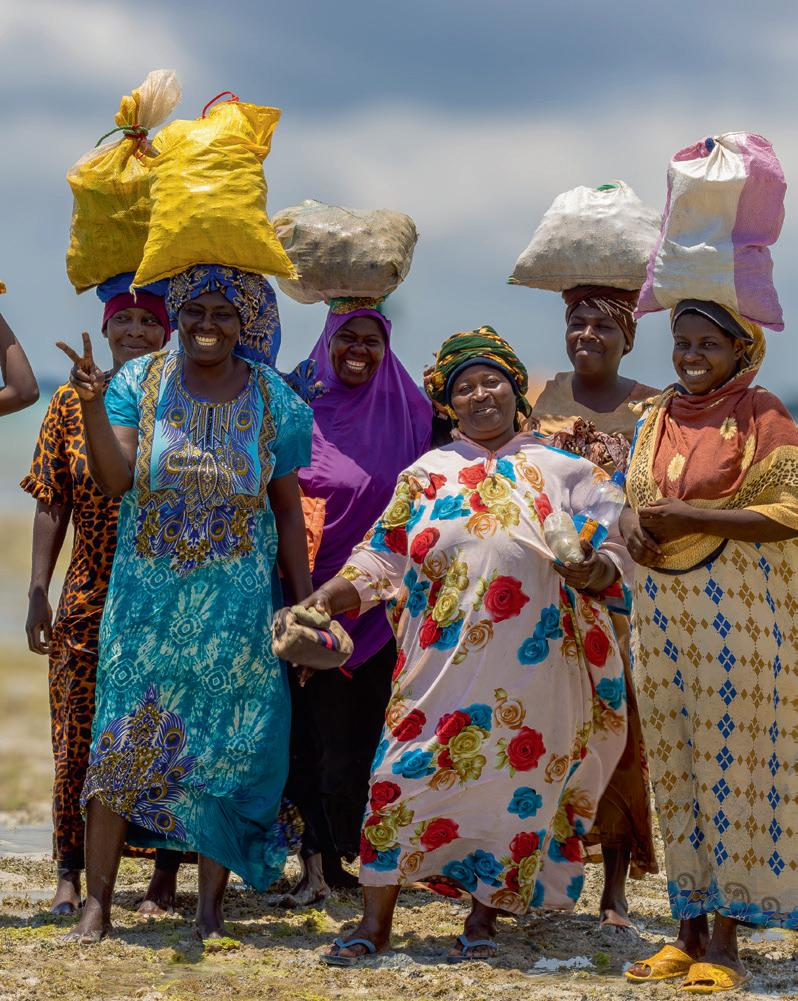

Laila and two Hidayas. “Every woman you see here has built her own house,” she says. “We start building rental properties as soon as we start earning. This way should our husbands kick us out then we simply move into our properties. In fact, my own husband lives in my house.” The women all break into a cheer at their leader’s words.
We approach a coral reef partly revealed by the low tide. The boat is anchored and one by one the women – still dressed in their flowing Swahili robes and hijabs –jump overboard. They hold hunting knives to spring free oysters and clams as well as bags to store the catch. The younger women have old snorkelling equipment held together by wire or string while the older ones free dive.
Only Bi Mosi and I remain in the boat. “Back in the day, I dived all the time.” she says wistfully. I learn that her husband is a farmer, and together they have raised seven children, all grown up now. “Some husbands don’t want their wives to do this job, which is unfortunate because if a woman stays home all day, what’s there to do except argue,” she says.

The tide continues to recede. The water where we are is now knee deep. “Are you coming in?” I ask jumping over. “I’m too old” she complains, feigning pain. “No, you’re not!” I insist, but she brushes me off and stays in the boat, busy on her smartphone.
The ladies are still underwater, except for Mwanapili and her daughter Hidaya who I join on a shellfish picking journey. Aged 19, Hidaya is the youngest member of the group. She recently graduated from high school but has been working alongside her mother during school breaks for a few
years. This income has made her one of the wealthiest teenagers in her village.
I see a diver emerge from the depths with living calamari on the tip of her spear. The women ladies stay in the water for around two hours filling sack after sack with no sign of exhaustion. As soon as one sack was full, they tied it to a makeshift buoy and dived back in. These buoys ensured the ladies could fill multiple bags without having to go back to the boat.
Bi Mosi finally decided to join in, jumping overboard with the grace of an Olympic gymnast. She explained to me that today’s catch was not bad, and each group member was capable of making TZS 30,000 (US$ 12) back on dry land. Ever the businesswoman, she buys wholesale from the ladies who do not have time to prepare the catch and sell it themselves. This keeps her busy at the market and earns her an additional income.
“Sometimes I leave home at 4am, pray and go to the market where I clean, marinate and fry the shellfish,” she says. My satays are well known in Zanzibar and by tourists from all over the world.”
At the moment each lady keeps her own money, but together they are in the process of formally registering ‘Baya Halipo’ as a community-based organisation, which would give them access to funding.
Bi Mosi says: “Aside from decent money and flexible working hours, the biggest benefit we get from our work is health. Shellfish contain plenty of medical benefits, Even the men of our village are strong. Our football team is leading the local league.”
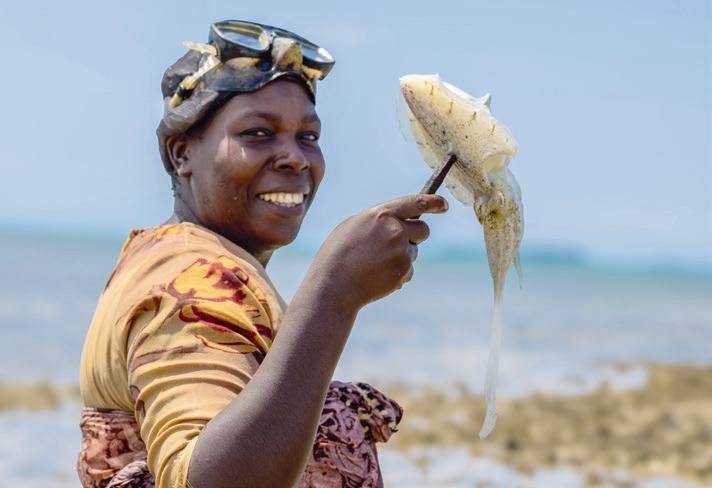
As the tide comes in the ladies start returning to the boat. On our way back to shore, the small engine struggles with the weight of the day’s catch and high waves, but nobody seems to care. Bi Mosi produces a big ripe mango, cuts it into pieces and starts sharing it around the boat. For a moment I felt part of this close-knit team of amazing women.
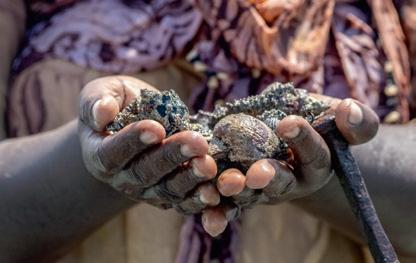
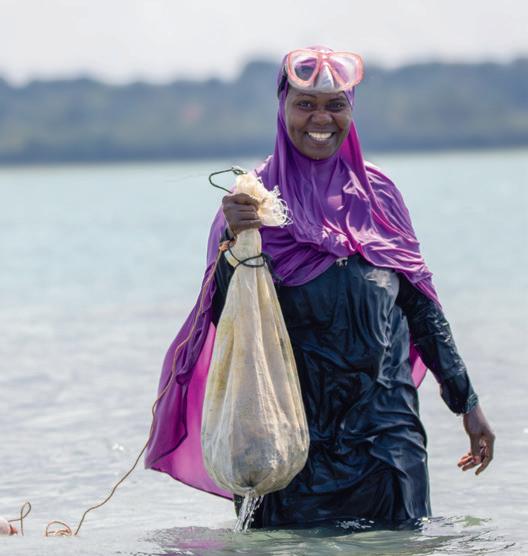




Writer and wildlife photographer Kevin Kelli has visited the Masai Mara many times, but it still reveals something new each time. His latest trip is led by a Maasai guide who reveals the hidden gems of his home.

IWAS HAVING TEA AMONG spear-wielding Maasai ‘morans’ or young male warriors. One of them was Ole Mantu Kishantoi, a young moran of the Ilmerisho generation who was my assigned tour guide. I was glad to have someone leading the way on wildlife photography tour. Self-driving in the Mara can be a daunting task.
Ole Mantu has been working in the Mara for almost two years, having started off as a cultural dancer at the camp before pursuing a course
in tour guiding. He is now a bronze certified guide and the resident naturalist at the camp.
At 6am we left camp with a packed breakfast. A few minutes later, Ole Mantu spotted a serval hunting a black-bellied bustard in the magnificence of the Mara sunrise. A great start to the day.
The birdlife was plentiful, with sooty chats and barn swallow flying alongside our Land Cruiser.
“Turn here” commands Ole Mantu.
There were around 10 hippos snorting in the water.
From under his traditional Maasai ‘shuka’ or robe, Ole Mantu removed a phone and made a call, speaking rapidly in Maa to another moran.
“Let’s go” he commanded.
In Maa language. Mara means spotted place, this is due to the iconic Balanites trees scattered among the pale plains.
“There’s nothing here but water!” I shoot back. He points and I gasp and reach for my camera!
On the way to Ole Mantu’s
unknown destination, we spotted masked weavers and Masai ostrich.
“Take this right turn, follow the left path to the river and look down the bank. “
“How do you know even where we are?” I asked.
“That’s Luluka, the queen, her oneyear-old son Riziki is probably nearby too.” He pointed.
“What queen, where?”
He motioned again, and I saw a movement at the opposite side of the river back. Perfectly camouflaged was a full-grown leopard. That was Luluka.
The queen however was asleep and not interested in a photo session, her son was also nowhere to be seen so we moved on to a heard of buffalo and cattle egrets.
We sought shade under Balanites for our breakfast that Ole Mantu spread on the hood of the Land Cruiser.
The Mara is renowned for its massive lion prides some totaling around 30 of the big cats.
After breakfast we entered the Rongai pride territory and Ole Mantu tracked down five members. Huddled around a thicket and fast asleep were young males, bachelors, about four years old.
“No wonder they’re bachelors, look how lazy they are.” I pointed out.
“Lions sleep for 19 to 20 hours a day.” Ole Mantu said.
While the big cats were sleeping, the bird life was up and about. We saw grey-backed fiscals, crowned lapwing, yellow-throated longclaw and a rare squacco heron.
On the way back to camp we came across a lilac-breasted roller, the national bird of Kenya, with its beautiful colours symbolising the different ethnicities and cultures all living together within one nation here.
Back at camp, we had an amaz-
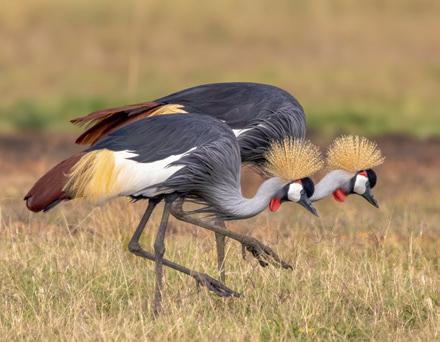

ing lunch of fish complemented by fresh herbs from the camp’s organic garden.
At 4pm we left the camp for our evening game drive. Ole Mantu told me: “We’re on a mission to find the black rhino.”
“No pressure brother, even an impala will do. I’m here for the experience, not for rare animals.”
We didn’t see the black rhino, but we found another serval, spotted hyena, herds of eland, cape buffalo and a silver-backed jackal happily

running along the road.
On the bird front, we saw marabou storks, African paradise flycatcher and the elusive slate-coloured boubou.
A black-headed heron also put on a show for us, posing right next to the Land Cruiser on a magnificent sunset backdrop as we headed back to camp.
The next day we were off again at 6am and promptly spotted an adult male impala silhouetted against the sunrise, a photographer’s dream.



We found a pair of yellow-billed storks in a pond as well as sandpipers and more sooty chats.
I stopped to take a photo of a hyena basking in the sun but could tell my guide wasn’t impressed. “Are there no hyenas where you come from?” Ole Mantu asked.
We crossed Talek river, a feat on its own with its steep ravine sides and strong currents. We were rewarded by an amazing sighting of plovers, sanderlings and loud hadada ibis.
This wasn’t my first time in the Mara, I had been here many times. Each time I return it is mesmerizing in a new way.
Here were zebra play fighting, galloping eland and a family of three elephants that allowed me a fantastic shot.
We were heading to Ole Mantu’s favourite spot.
“Only a few people know this place, I call it the golf course.”
Nobody else was around the big pond. Its water was covered in float-
ing plants, which did indeed make it look like a flat fairway.
“That rock is moving”, I point, “so is that one!”
The rocks turned out to be four or five adult hippo.
There were also flocks of sacred ibis, Egyptian geese and plovers. It was magical.
“Let’s move on a little bit.” Ole Mantu says.
“What could be better than this?” I asked.
“Look ahead.” He pointed.
A small distance from the pond, were three grey-crested crane – one of the most beautiful birds of Africa, in my opinion.
Most people consider rare birds to be the best sightings, but on this cold morning in the middle of the Masai Mara plains, nothing could be more beautiful than a bird that graces the coat of arms of neighbouring Uganda.
“I know another secret place,” Ole Mantu said.
“How many secrets places do you know?”
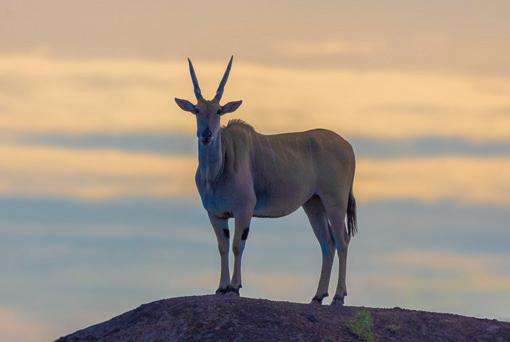

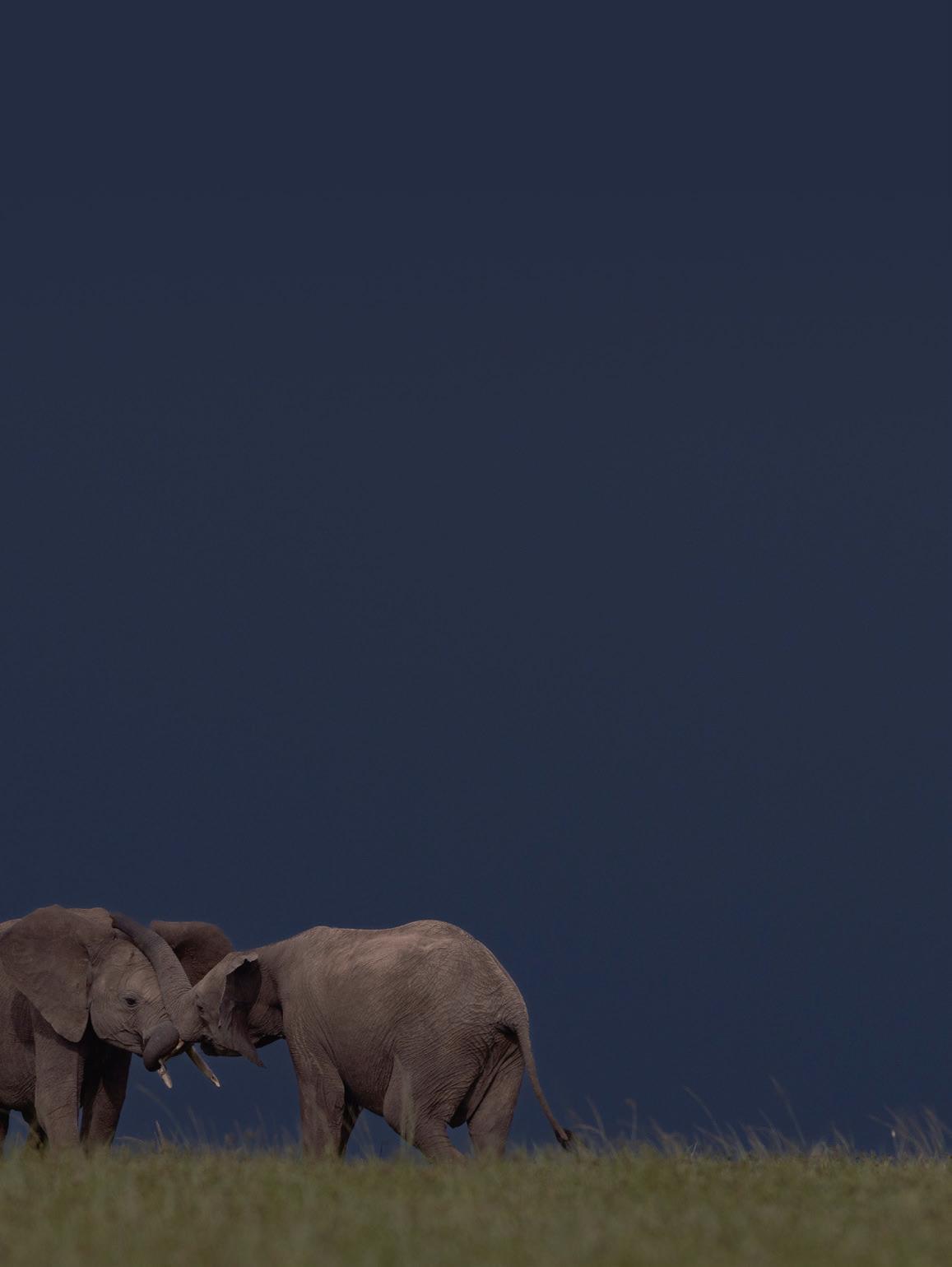
“This is my home.” He shrugged.
And it was, because hidden between ancient trees was a narrow rough path that opened to a lush carpet of grass overlooking the Mara River, alive with the splashes of hippo.
This was today’s epic breakfast spot, surrounded by a small flock of little bee-eaters.
Our last game drive at 4.30am yielded amazing elephant sightings. We encountered a herd that allowed us to get close for some amazing photos before the mother elephant lost patience, flared her ears, lifted her trunk and, in no uncertain terms, trumpeted at us to get lost. Which we dutifully did.
We found a pair of tawny eagles on the roadside; they had taken down a hare and were busy tucking in.
A little further on, we met female members of the Rongai lion pride coming back from a night of hunting. They passed right in front of our vehicle to lie in the thickets where their cubs were waiting. It was a fantastic end to an amazing trip.
What are your career plans? I ask Ole Mantu.
“I will go to driving school and become a driver/guide at the camp.” He said simply.
It sounded like a great plan, I reflected. What better job than to be surrounded by nature, doing what you love and contributing to the conservation of your ancestral land while you’re at it?

FLY WITH US: DAILY FLIGHTS TO NAIROBI

From city safaris to arts and food, Nairobi offers something for everyone
Nairobi is the world’s only city to have a national park just ten minutes from its centre. Nairobi National Park is fenced in on three sides, but its open southern boundary allows migrating wildlife to move between the park and the Kitengela plains. It results in a unique safari experience with lions, leopards, giraffe, zebra, rhino and much more to be seen in the wild with the spectacular city skyline as a backdrop.

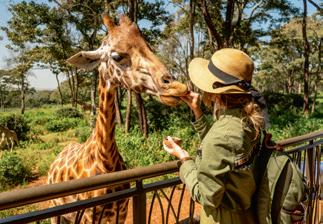
Nairobi has a thriving arts scene. Every November it hosts the East African Arts Auction that showcases some of the best modern and contemporary art from the region. All-year round you can check out the depth of talent among local artists – and see them at work – at Opportunity Factory. This marketplace for crafters in Mbagathi Road has stalls selling glassware, handmade home furnishings, jewellery, wood carvings and more. In the Hurlingham district of the city you’ll find Kuona Trust Arts Centre, another gem for discovering local artists who present their work there at regular exhibitions and installations, events, workshops and community outreach programmes.
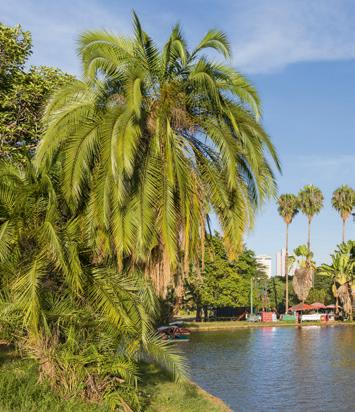
Nairobi residents embrace the hustle during the week, but the weekend is a time to relax and enjoy quality time with loved ones. A family favourite when Saturday comes is Uhuru Park, a recently renovated recreational


The city’s iconic matatus are like artworks on wheels. These pimped-out privately run minibuses go all out to attract customers with graffiti art covering the bodywork, music blasting and huge home entertainment systems inside showing films or music videos. Taking a ride is a sensory attack. There are no timetables or schedules: when it’s full, it goes. However, each matatu does stick to a regular route so you will get to where you need to go and affordably. If you are unsure, ask the conductor who takes your fare – cash only – to let you know when you arrive at your destination.

park that is a welcome green space amid the concrete jungle of the CBD. Families flock to the fun fair and the boating lake while there is plenty of room for groups to gather and enjoy picnics and barbecues on the lawns.
The bustling city centre with its skyscrapers and car-clogged streets may be something or a concrete jungle, but it is possible to escape into nature without leaving Nairobi. Karura Forest is a protected urban forest covering about 2,570 acres and split into three parts on the outskirts of the city. Amid its towering trees and tranquil pathways, it’s possible to leave the bustle of the city behind. Wildlife includes bushbuck, duiker and porcupines while human traffic includes Nairobians walking, cycling and even horseback riding along its trails.
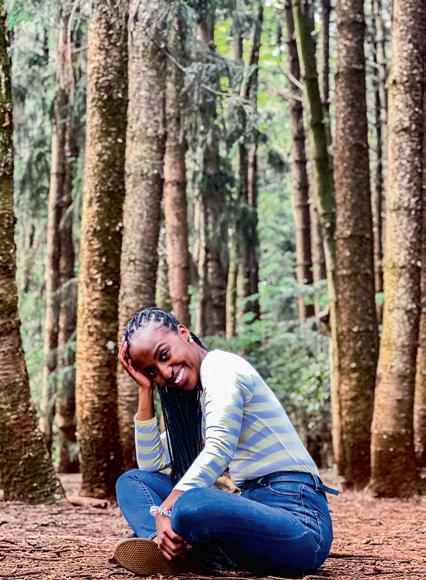
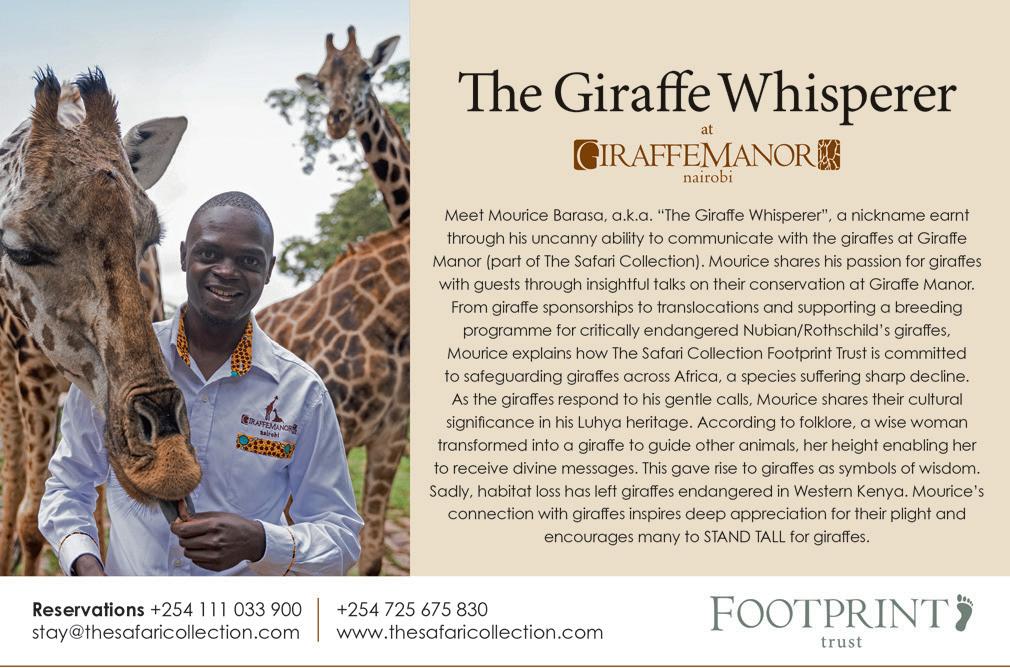
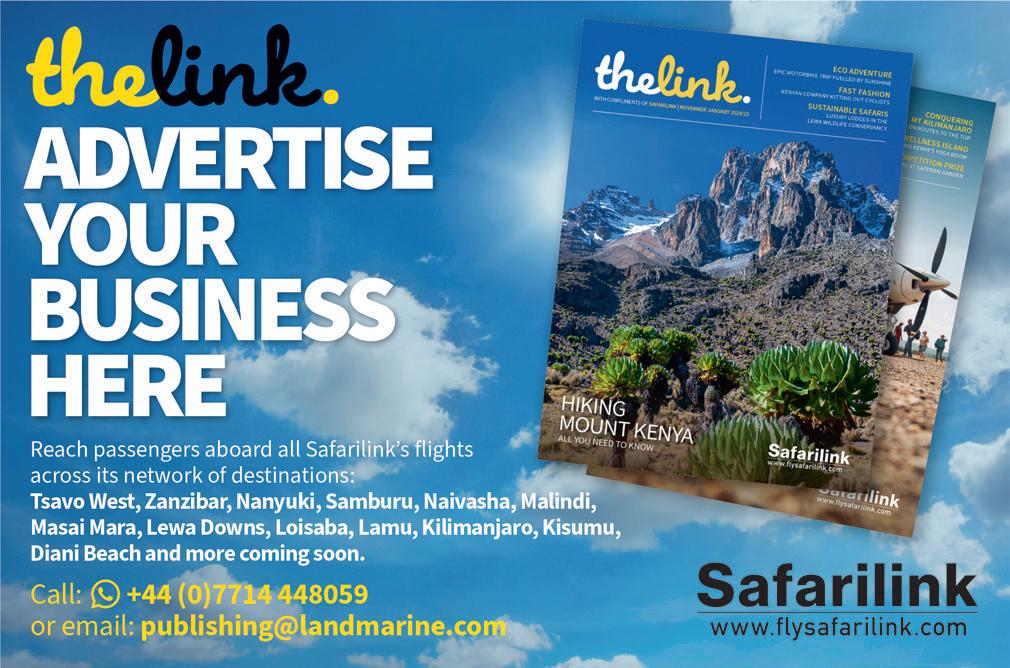
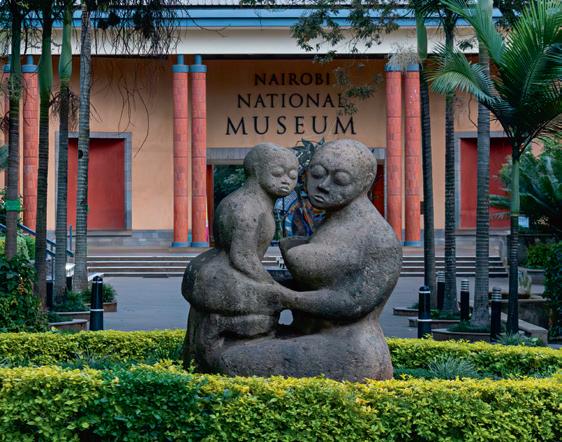
With its vast collection of artefacts ethnographic displays, and wildlife exhibits the Nairobi National Museum is the place to dive into Kenya’s fascinating history, culture, and natural heritage. Permanent galleries include early skull fossils found near Lake Turkana in northern Kenya, a collection of ancient coins and an Asian African Heritage exhibition.
From street food to fine dining, there is magic in each bite in Nairobi. If you want a classic city snack on the go, head to one of the ubiquitous stalls selling chapo smokie, a hot dog that is sliced lengthwise, grilled, and then filled with diced tomatoes and dollops of chili or ketchup. More refined palates may want to check out Cultiva, a farm-to-table restaurant in affluent suburb Karen, with a seasonal menu of dishes such as tune ceviche and braised tongue taco loaded with heirloom crops from its own organic farm.


Nairobi is a 24-hour city. That is something that you will appreciate if you sample the city’s fired-up club scene. Dance ‘til dawn at premier nightlife hotspots such as The Bar Next Door in upscale Kileleshwa or check out cutting edge Kenya electronica at cocktail bar and music venue Muze in Westlands.
Kibera, Africa’s largest slum, occupies 2.5 sq km on the outskirts of Nairobi. It is a place of deprivation and dislocation and there are organised tours that offer little more than poverty tourism. However, there are trips that reveal another side as Kibera is also a place of creativity and resilience. Here you will find a ballet school for slum kids, the studio of made-in-Kibera fashion brand Looks Like Avido alongside start-up shops selling sandals made out of old tyres and jewellery created using recycled magazines. Take a tour that allows you to see and support projects such as this.

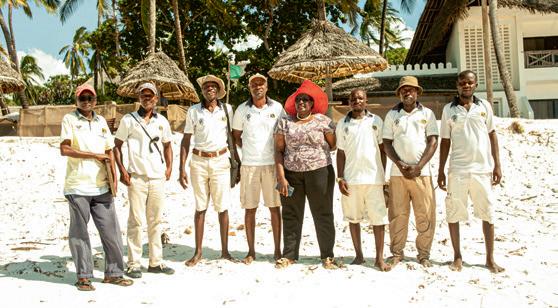
A community-run mangrove tree nursery is among the recent ‘blue carbon’ investment to protect Kenya’s coastline and counter climate change. African blogger and travelling photographer Selorm Ernest Sosu visits Dabaso in Kilifi County to find out more.
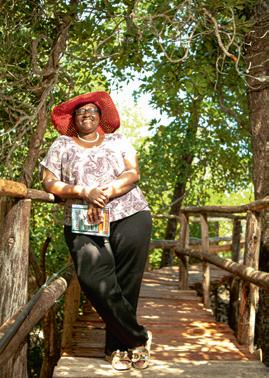
KILIFI COUNTY, known for its beautiful beaches, is increasingly becoming a focal point for blue carbon investment – a transformative approach to mitigating climate change by conserving and restoring coastal and marine ecosystems. Every two weeks in Dabaso – a serene village in Kilifi – locals nurture and plant mangrove seedlings in a collaborative initiative between the Greens of Africa Foundation and the Dabaso-based Sita Umoja Self-Help Group.
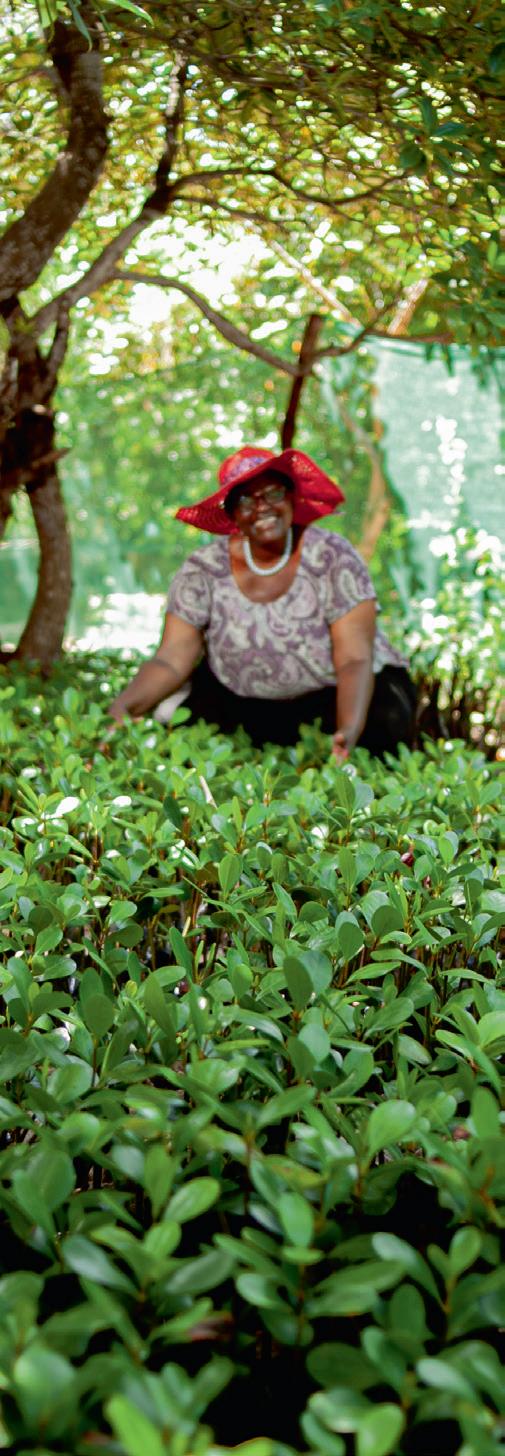

THESE VITAL ‘BLUE CARBON’ ECOSYSTEMS ARE KNOWN TO CAPTURE CARBON DIOXIDE AT RATES UP TO TEN TIMES GREATER THAN TERRESTRIAL FORESTS, THEREBY PLAYING A CRUCIAL ROLE IN MITIGATING CLIMATE CHANGE.
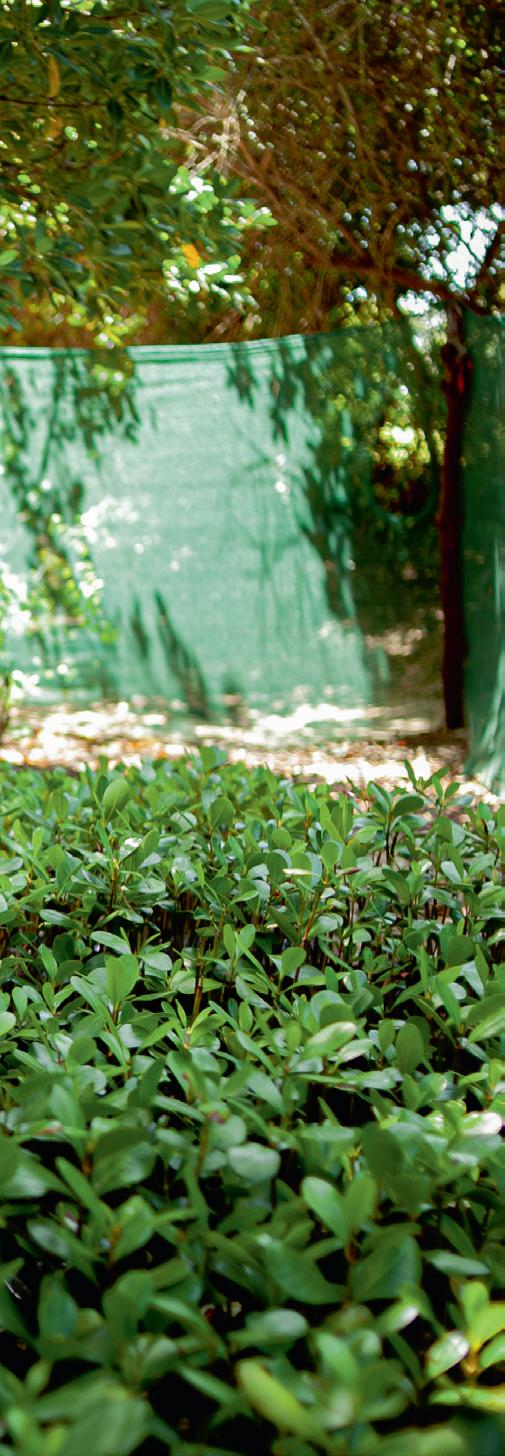

Mangroves are hardy tropical plants that grow between land and sea. These vital ‘blue carbon’ ecosystems are known to capture carbon dioxide at rates up to ten times greater than terrestrial forests, thereby playing a crucial role in mitigating climate change. They also act as natural barriers, protecting coastal communities from storm surges and erosion. Furthermore, they are nurseries for fish and other marine life, supporting biodiversity and local fisheries.
Blue carbon investment is a funding initiative with the goal of protecting and restoring coastal and marine ecosystems, such as mangroves, seagrasses, and salt marshes. Mida Creek, a tidal inlet
that expands across an area of 32 sq km in Dabaso and is pivotal for both environmental sustainability and the economic well-being of local communities, is a target for investment.
Greens of Africa Foundation and Sita Umoja Self Help Group are working closely with local communities in Dabaso to promote mangrove restoration. Their approach is holistic, integrating environmental education, community engagement, and sustainable economic development. Every two weeks villagers plant mangrove seedlings bought from them. It has become a communal event that fosters a deep connection between the people and their environment and afforestation of the marine coast.
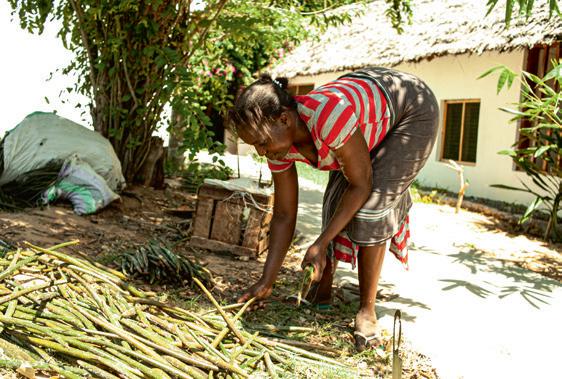
The foundation provides training on mangrove ecology and restoration techniques ensuring that the community members understand the significance of their efforts. They learn about the different species of mangroves, the best planting practices, and how to care for the seedlings until they mature. This knowledge transfer is crucial for the sustainability of the project, empowering locals to take ownership of the restoration efforts.
This project provides tangible economic incentives for the locals apart from the environmental benefits. Out of the proceeds of selling the matured mangroves for ecological restoration along the coast, villagers have launched the Sita Sunset Hotel to generate additional income in a region where economic opportunities can be limited.
Moreover, the restored mangroves enhance local fisheries by providing breeding grounds for fish and other marine species. This boosts the availability of fish, benefiting local fishermen and ensuring food security.
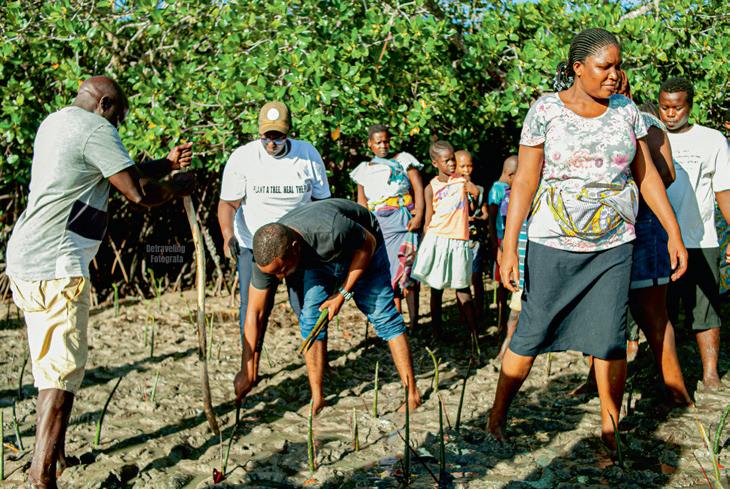
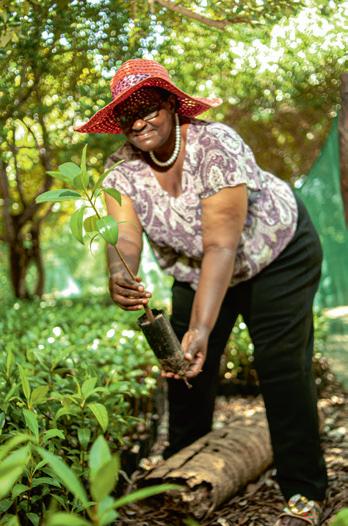
While the blue carbon investment and mangrove restoration efforts in Kilifi County are promising, they are not without challenges. One significant challenge is the impact of climate change itself, which can alter weather patterns and affect the growth and survival of mangrove seedlings. Additionally, securing consistent funding and
ensuring long-term sustainability of the projects can be difficult. To address these challenges, Greens of Africa and Sita Umoja Self Help Group employ a multi-pronged strategy. They collaborate with local and international partners to secure funding and technical support. This includes working with academic institutions for research and monitoring, as well as engaging with poli-


cymakers to create supportive regulatory frameworks.
Another critical aspect is education and awareness-raising. By educating the community about the broader impacts of climate change and the importance of mangroves, Greens of Africa and Sita Umoja Self Help Group foster a culture of conservation.
The blue carbon investment in Kilifi County represents a beacon of hope in the fight against climate change. It is a sustainable model that can be replicated in other coastal regions. It is a testament to the power of collective action and the critical role of blue carbon ecosystems in the global fight against climate change.


Mountain bikers from around the world and the local community come together for an unforgettable three days on Mount Kenya. Will you be among them?
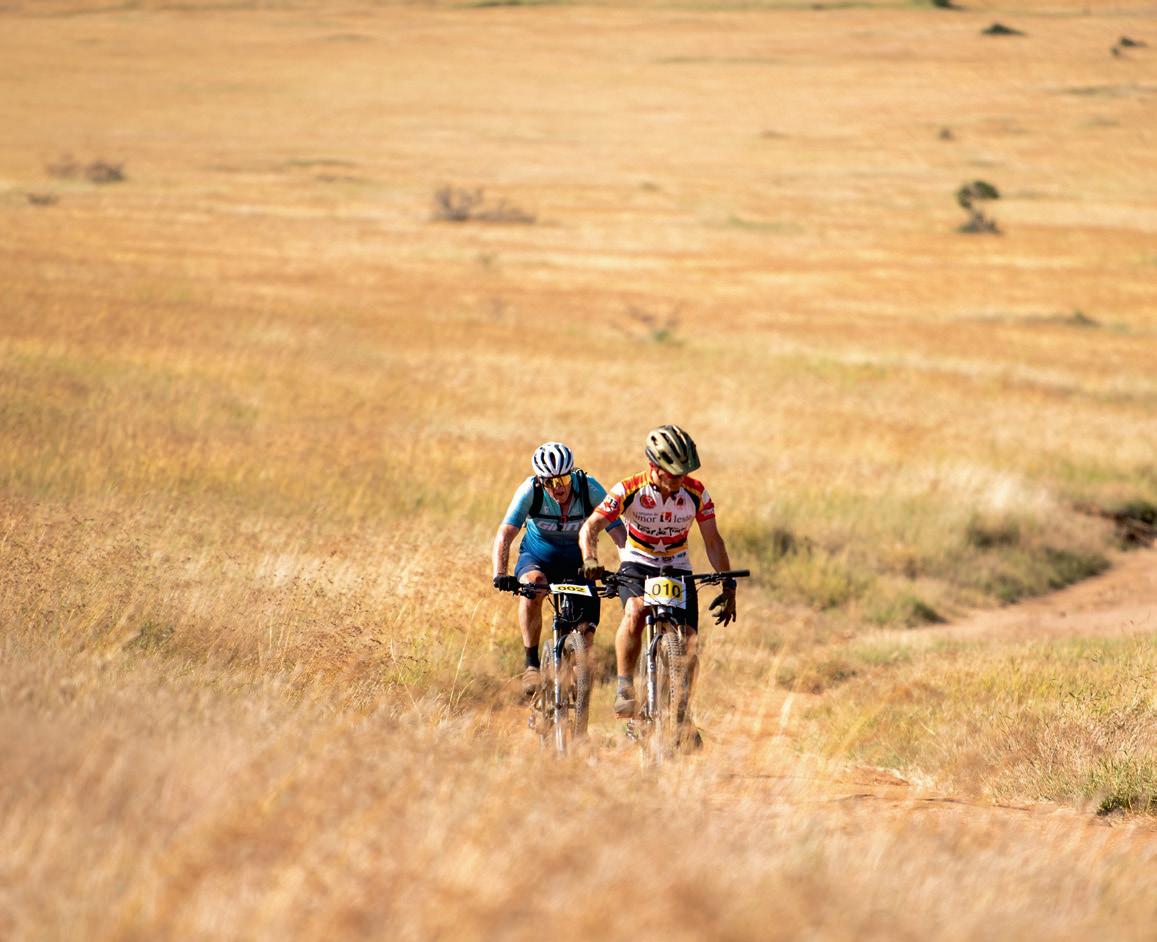
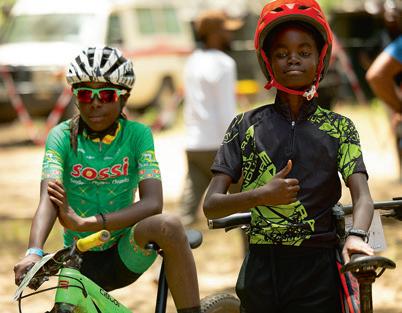
KNOWN FOR ITS STEEP slopes, rugged terrain, and high altitudes, Mount Kenya is considered one of the most challenging hikes in Africa. Still, there are those for whom tackling of the continent’s second highest peak could still benefit from an extra dose of two-wheeled adrenaline.
To satisfy these thrill seekers there is the 10to4 Mountain Bike Challenge. The annual event sees hundreds of mountain bikers take on Mount Kenya’s jagged terrain and the Laikipia landscape in a series of unforgettable races.
Billed as “Africa’s premier mountain biking event”, the three-day challenge has been running for more than two decades and attracts outdoor enthusiasts from across the globe. Past competitors include David Kinjah – the Kenyan cyclist who mentored
four-time Tour de France winner Chris Froome – and riders from the Safari Simbaz Cycling Centre in Rungiri, Kenya.
This year the 23rd 10to4 Mountain Bike Challenge will take place over the weekend of February 14 to 16. It is an adrenaline-charged experience with races targeted at all levels of riders – from the beginners to the bonkers!
The Classic route is a 60 km adventure with tough climbs and thrilling descents while he two-

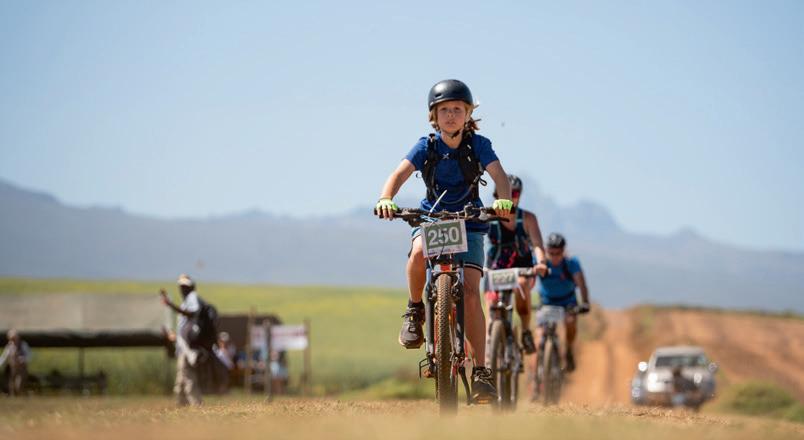
day Extreme Race is the ultimate test for elite riders. It takes place over two days and involves 135 km of brutal climbs, technical trails, and 2,000m elevation gain. It is not for the faint-hearted!
There are also a series of races targeted at younger riders. Those aged eight and above can take part in the 9 km Hog and the 1 km Scramble obstacle course.
The centre of pre- and post-race activities is the Borana Race Village in the mountain’s foothills. Here, riders can register for their races, drop their bikes off and fuel up at a range of food and

drink stalls. The village also has camping options for over-night accommodation during the event.
Around 400 riders are expected for this year’s event – a turn-out that requires some detailed organisation. There are marshals and medical staff along the route as well as strategically placed water stops so the riders can stay hydrated. Fascinated locals also line the course to cheer on cyclists and hand out snacks. With some of the race routes passing through wildlife-renowned areas such as the Borana Conservancy and the Ngare Ndare Forest Park there is also a good chance riders will pass some bemused looking animals along the way.
The event also benefits from the logistics and safety expertise of lead and longtime sponsor Tropic

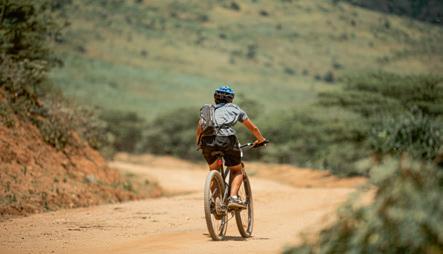

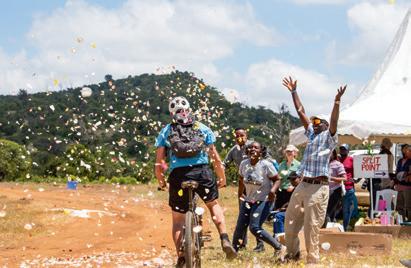
protection and conservation of Mount Kenya and its surroundings. Riders pay an entry fee and can raise more money for the causes by getting friends and family to sponsor them.
When: May 31
Where: In Kenya. Venue is kept secret until a few days before the event
What: This annual off-road competition raises funds to support the activities of the Rhino Ark Kenya Charitable Trust. Drivers and their teams plough up cliffs and down ravines to cover the shortest distance between 13 checkpoints.
Register: www.rhino-charge.org/register
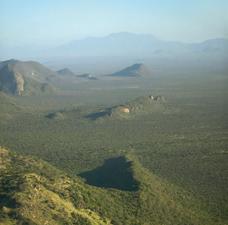

Air. The Nanyuki-based air charter company has a fleet of helicopters that connect passengers to some of Kenya’s most dramatic locations. In 2023, the first ever tandem wingsuit jump was launched from one of its helicopters at 5,500 metres over Mount Kenya before landing on the Lake Michaelson peak.
There are prizes for the bestplaced racers. This year every rider will also get an accurately measured finish time thanks to race organisers the Mount Kenya Trust teaming up with a service provider experienced in handling similar adventure events.
The 10to4 Mountain Bike Challenge is a significant fundraising event in the area with every shilling raised going towards the
All proceeds go to local conservation and community development projects across Mount Kenya. These include work to mitigate wildfires; supporting the work of rangers in the Ngare Ndare forest; improving access to affordable healthcare; and a project that promotes a collective responsibility towards conservation that reaches over 3,500 students each year.
When: June 28
Where: Lewa Wildlife Conservancy
What: Amateur runners line up against Kenya’s top athletes in a marathon at high-altitude across demanding terrain surrounded by wildlife.
Register: www.lewasafarimarathon.com
Register at www.10to4.org for this year’s race or next.
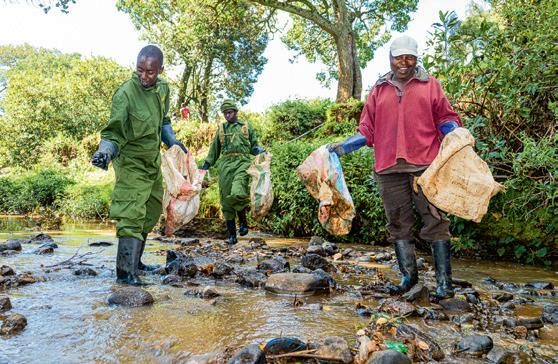




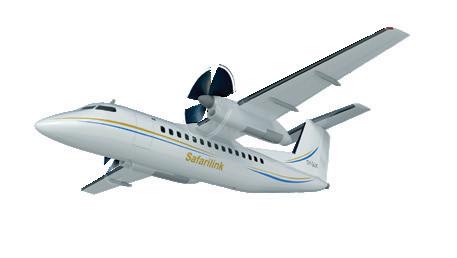

From Kenya’s premier national parks through Africa’s highest mountain to the best beach resorts of the Indian Ocean coast, Safarilink’s network of 17 destinations showcases East Africa’s finest attractions.
The non-stop Kenyan capital is also Safarilink’s hub with our operations centred at the city’s Wilson Airport. Nairobi is the place to soak up Kenya’s contemporary culture with its vibrant food, music and art scenes. If you want to escape the bustle, head to the capital’s ‘green lungs’, Karura Forest, or make the most of Nairobi being the world’s only wildlife capital with a visit to Nairobi National Park.
WEST (Daily flights)
Tsavo West National Park offers some of the most magnificent game viewing in the world with its safari staples including elephant, rhino, hippos, lions, cheetah, leopards and buffalos.
NANYUKI (Three flights daily)
The gateway to the wilderness of Mount Kenya National Park where wildlife includes leopards, giant forest hogs and more than 100 bird species. The town is also the starting point to trails ascending Africa’s second-highest peak, Mount Kenya.
MOMBASA (Daily flights)
Kenya’s historic second city is a living museum that reflects its time as a trading hub linking Africa with China and India. It is also an excellent starting point for Kenya’s renowned beach resorts.
MALINDI (Daily flights)
The town of Malindi sits amid a string of tropical beaches
dotted with hotels and resorts. Much of the spectacular coastline is protected by the Malindi Marine National Park and there is more untouched natural splendour at the nearby Arabuko-Sokoke Forest Reserve, which is home to elephants and more than 200 species of birds.
DOWNS (Three flights daily)
The Lewa Wildlife Conservancy is famous for the variety of rare wildlife it protects. Set in a valley in the middle of the Laikipia Plateau, it is home to East Africa’s largest rhino population as well Grevy's zebra, Sitatunga antelope, cheetah, lion, elephant and reticulated giraffe.

LAMU (Daily flights)
Sun, sea and Swahili culture. Lamu is a true island escape. Wander the labyrinthine streets of its Unesco-recognised town – the oldest and best-preserved Swahili settlement in East Africa – take in the spectacular sunset from a traditional dhow fishing boat or just explore the stretches of footprint-free beaches that ring the island.
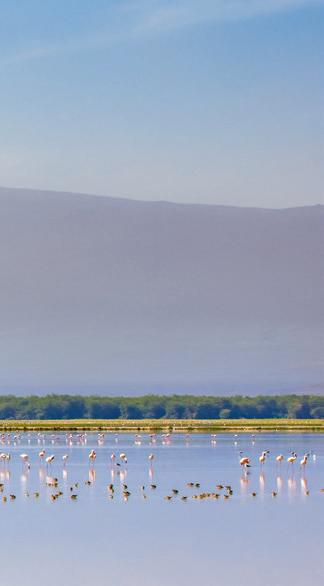

(Daily flights)
Africa's highest peak, Mount Kilimanjaro, is on the bucket-list of every climber. There are a variety of guided routes to the snow-capped summit to suit all levels. Once you’ve completed your climb extend your stay with a safari in Kilimanjaro National Park, a tour of the coffee plantations in the foothills or hit the town of Moshi for an urban adventure.
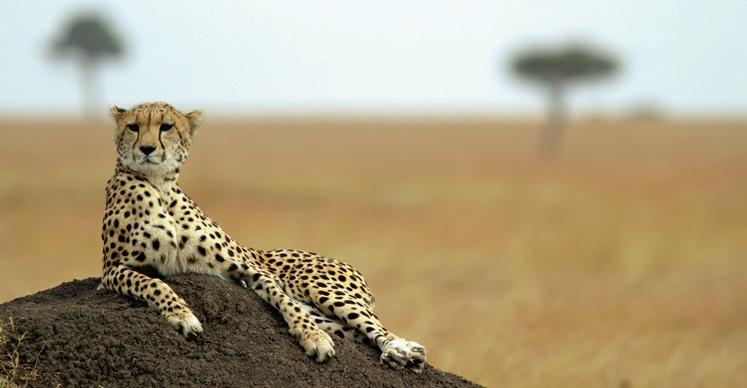
(Daily flights)
Mount Kilimanjaro provides the stunning backdrop to the Amboseli National Park, framing your safari views of huge herds of elephant as well as leopard, lion, cheetah, giraffe and more than 600 bird species.
ZANZIBAR (Daily flights)
This vibrant Indian Ocean island offers visitors a taste of Swahili culture old and new. In the ancient port of Stone Town coral and limestone houses, palaces, and forts survive from its 19th century trading heyday while the island’s coastline is a blend of sleepy fishing villages and swanky beach resorts. Inland follow your nose for the heady perfume of the spice farms.
(Three flights daily)
The Samburu National Reserve is known for its abundance of rare northern specialist species such as the Grevy Zebra, Somali Ostrich, Reticulated Giraffe, Gerenuk and the Beisa Oryx – also referred to as the ‘Samburu Special’.
(Three flights daily)
The calm, glassy waters of Lake Naivasha contain a huge
hippo population. Boat trips are available, some that take you to the privately owned game sanctuary of Crescent Island, which is walkable and will reveal giraffe and zebra. Far more wild animals are to be found in the neighbouring Hell’s Gate National Park with herds of buffalo and all manner of antelope roaming amid the dramatic Rift Valley landscape.
(Four flights daily)
The wild and rugged landscapes of the Masai Mara offer Kenya’s premier safari adventures. From July to October, it hosts the world-famous Great Migration of 1.5 million wildebeests with the Mara river crossings a dramatic highlight. The park also hosts all of the Big Five animals.
(Three flights daily)
The Loisaba Conservancy in Northern Kenya is a haven for over 260 bird and 50 mammal species, including endangered Grevy’s zebra. Big cat lovers will also find prides of lions, cheetahs and leopards. African wild dogs, thought for many years to be extinct in the region, are returning.
(Two flights daily)
Kenya’s third-largest city is situated on the northern shores of Lake Victoria. The lakeside vantage point offers some spectacular sundowner opportunities as well as boat rides and fishing trips. For animal adventures, head to the Kisumu Impala Sanctuary that shelters herds of impalas, zebras, cheetahs and baboons.
(Two flights daily)
The Kenyan coast is blessed with beautiful beaches galore, but Diani may be the fairest of them all. With 15 km of powdery white sand and waters calmed by an off-shore coral reef it provides ideal conditions for swimming, snorkelling, scuba diving, kite surfing, and water sports like windsurfing and kiteboarding.
(Daily flights)
The high altitude and clean air of this city nestled in the highlands of western Kenya has produced some of the world’s best distance athletes. It is a place that rewards the outdoor life with natural attractions such as the Rift Valley, Kakamega Forest, Kerio Valley and the Nandi Hills nearby.

Kisumu
Samburu Loisaba Nanyuki Naivasha
Lewa Downs
Migori
Masai Mara
Kilimanjaro Amboseli
Tsavo West
Zanzibar
Malindi Lamu
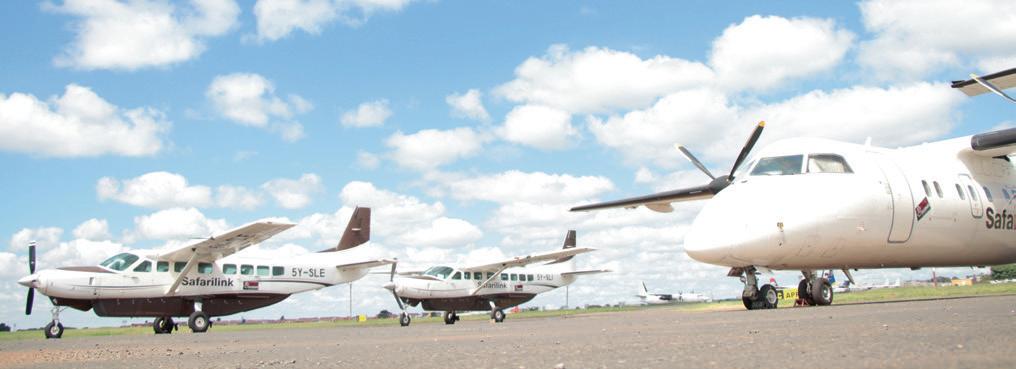
The 14-strong Safarilink fleet includes aircraft suited to the remote airstrips and short flight times that make up the majority of the destinations we serve. We also have four twin-engine Dash 8s to fly more passengers on longer routes
CESSNA CARAVAN C208BS
Number of aircraft: 10
Engine type: Turbo-prop single engine
Manufacturer: Textron Inc (formerly Cessna)
Crew: Two pilots
Maximum passengers: 12
▪ This workhorse of the fleet is a rugged fixed under-carriage aircraft that is ideal for landing on the ‘dirt’ airstrips common in game parks. Its high wings and large windows allow exceptional viewing of the unfolding scenery and animals while in flight. Our Cessna Caravan fleet now totals 10 after the arrival of two new aircraft in March 2024.
8-106 (5Y-SLD)
Number of aircraft: One Manufacturer:
DeHavilland Canada
Engine type: Twin engine Crew: Two pilots and one flight attendant
Maximum passengers: 37
▪ This Pratt & Whitney 120A powered aircraft is well known to commuter travellers around the world. Its pressurised cabin enables it to fly above the weather on the longer routes and its all-leather seats provide a touch of luxury.
ADDRESS: PHOENIX HOUSE, WILSON AIRPORT, PO BOX 5616, NAIROBI 00506, KENYA
TEL: +254 20 6690000/ +254 730 888 000
EMAIL: RES@FLYSAFARILINK.COM
WEBSITE: WWW.FLYSAFARILINK.COM
CALL CENTRE: 020 669 0000
NAIROBI
PHOENIX HOUSE, WILSON AIRPORT MOBILE: +254 730 888 000
8-315 (5Y-SLK)
Number of aircraft: One Manufacturer:
DeHavilland Canada
Engine type: Twin engine Crew: Two pilots and two flight attendants
Maximum passengers: 52
▪ This Pratt & Whitney PW123E powered aircraft has a pressurised cabin which enables it to fly above the weather on the longer routes. It features all-leather seats for each passenger.
8-311 (5Y-SLC)
Number of aircraft: One Manufacturer: DeHavilland Canada Engine type: Twin engine Crew: Two pilots and two flight attendants Maximum passengers: 50
▪ This Pratt & Whitney PW123B powered aircraft has a pressurised cabin which enables it to fly above the weather on the longer routes. It features all-leather seats for each passenger.
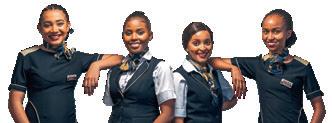
DIANI
TELEPHONE: +254 710 772 222/ 735 697 410
EMAIL: DIANIOFFICE@FLYSAFARILINK.COM
KISUMU
TELEPHONE: +254 793 500 500/ 757 500 500
EMAIL: KISUMUOFFICE@FLYSAFARILINK.COM
MALINDI
TELEPHONE: +254 769 700 700
EMAIL: MALINDIOFFICE@FLYSAFARILINK.COM
LAMU
8-202 (5Y-SLO)
Number of aircraft: One Manufacturer: DeHavilland Canada Engine type: Twin engine Crew: Two pilots and one flight attendant Maximum passengers: 37
▪ This Pratt & Whitney PW123D powered aircraft has a pressurised cabin which enables it to fly above the weather on the longer routes. The interior is with all leather seats to provide a touch of luxury.
TELEPHONE: +254 769 600 600
EMAIL: LAMUOFFICE@FLYSAFARILINK.COM
MOMBASA
TELEPHONE: +254 769 000 444/ 101 888 000
EMAIL: MBAAIRPORT@FLYSAFARILINK.COM
ZANZIBAR
TELEPHONE: +255 674 308 858
EMAIL: ZNZOFFICE@FLYSAFARILINK.COM
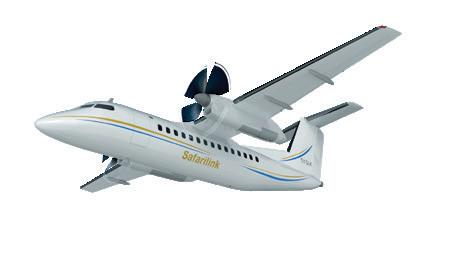
Pay for your flights on our www. flysafarilink.com by credit card or mobile money when making your booking. Alternatively, email res@flysafarilink.com for other payment options such as credit card payment links‚ or bank transfer options.
Children of two years of age and above but not more than 12 years of age are charged at 75 per cent of the applicable adult fare‚ depending on the class booked. Infants under two years of age are not charged providing they are not occupying a seat. Infants are not entitled to a baggage allowance.
Save time at the airport and check-in online between 18 hours and two hours before your flight. You can also checkin and download your boarding pass on your phone. When you check-in online‚ you can choose your seat for free. Once you have checked in online you will be required to present yourself at the check-in counter to confirm your presence.
Check-in counters will close 45 minutes prior to departure time on international flights (to/from Zanzibar and Kilimanjaro) and 30 minutes prior to departure time on other services. After these cut-off times passengers will not be allowed to check-in.
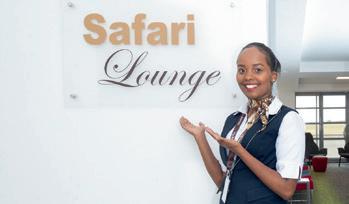
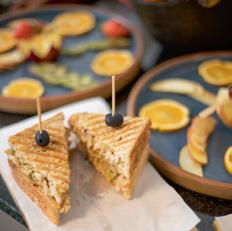
Our Safari Lounge is an extension of our main dedicated lounge and is located at our head office on the first floor at Wilson Airport‚ Nairobi. Whether you’re travelling for business or pleasure‚ you can relax in our executive lounge for up to four hours before your flight. While here passengers can enjoy the services of a personalised barista with coffee roasted by hand. They can also take advantage of the shower facilities and

the drink and snack bar. The Safari Lounge opens daily from 0600hrs to 1600hrs and can be booked for passengers on both private charters or scheduled flights at a fee of US $40 per person. It must be booked at a minimum of six hours prior to departure time. Children under 12 years will not be permitted unless booked as part of a private charter group. To book‚ contact our reservations team at res@flysafarilink. com or call +254 730 888 000.
▪ Safarilink’s frequent flyer programme, ‘Safari Bonus’, allows passengers to earn reward points on every Safarilink scheduled flight. To sign up complete the online enrolment form on our website.
▪ Once you have signed up you will get a membership number, which you will need to quote at the time of booking or upon checking in.
▪ Points can be earned on both one way or return Safarilink scheduled flights. The number of points earned are subject to the class of travel and fare paid.
▪Points cannot be earned on complimentary tickets. Children upwards of two years old can register as members. Points earned can be transferred to a registered member.
▪ Once you have sufficient points‚ book your reward ticket to any of our 17 amazing destinations
▪ Requests for award tickets should be sent to safaribonus@ flysafarilink.com‚ quoting your membership number and name. For any queries or clarifications‚ please send an email to safaribonus@flysafarilink.com
Zanzibar‚ Kisumu‚ Diani‚ Lamu and Malindi: 20Kg max
All other destinations: 15kg max
▪ The baggage allowance is inclusive of hand luggage. Infants not paying for a seat are not entitled to baggage allowance. Excess baggage will only be carried‚ at the sole discretion of the captain of the aircraft‚ if the payload of the aircraft and/or space permits and will be charged at the prevailing rate for carriage of freight.
Is there anywhere I can store any excess baggage?
▪ Yes‚ there is a complimentary secure store at our Wilson Airport Office. Please ask at the Check-in counter.
Is the 15kg baggage allowance inclusive of hand luggage?
▪ Yes. If passengers have significant excess baggage they can book a ‘freight’ seat at an adult rate‚ which permits confirmed carriage of an extra 75 kgs.
What happens if my baggage is over the weight limit?
▪ In most circumstances our check-in staff will use their discretion and allow a leeway of up to two kgs. However additional excess baggage will only be carried‚ at the sole discretion of the captain of the aircraft‚ if the payload of the aircraft and/or space permits and will be charged at the prevailing rate for carriage of freight (currently KES 400 per kg or $4 equivalent.
Why do you ask that my luggage is in a soft bag?
▪ Most of our flights are operated by aircraft whose luggage compartments have limited volume and are of an irregular shape. It is thus more difficult for us to stow large rigid suitcases‚ which in an extreme situation‚ might have to be carried on the next available flight.

